Welshpool is a market town situated in the historic county of Montgomeryshire, some four miles from the Wales – England border, near to the River Severn. The town lies in a prominent position along the main road from Newtown to Oswestry. The community includes Cloddiau and Pool Quay, and incorporates the fine Powis Castle and its estate, which lie just to the south. The men and women of the town and surrounding area who fell during both World Wars are commemorated on the Welshpool and District War Memorial, which is situated in a memorial garden along a steep flight of steps running from Church Street to the grounds of St. Mary’s Church, in a prominent position overlooking the town. The memorial takes the form of a series of sixteen tablets, set into a semi-circular wall, which curves around an elaborately carved lantern cross. This page commemorates the fallen of the town itself during the Great War. The fallen of the district are commemorated on a seperate page – Welshpool War Memorial, WW1 (The District).
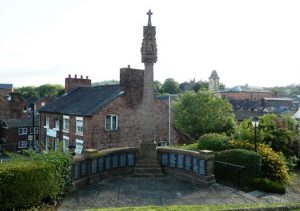
Welshpool War Memorial (The Town)
The Great War, 1914-1918
Richard Allen, Private, 22795, Welsh Regiment. Richard was the son of John and Mary Jane Allen, of 6, Three Tuns Passage, Welshpool. He had moved to South Wales to find work as a young man and was interestingly jailed at Swansea for stealing potatoes at Aberavon in August 1914. Upon his release, he enlisted at Cardiff into the Welsh Regiment, and was drafted to France on 1 April 1915, joining the 1st Battalion, Welsh Regiment, which was at Dranoutre, attached to 84 Brigade, 28th Division. The Battalion had been seconded to the 5th Division, but within days of Richard’s arrival, moved to Ypres to re-join the 28th Division. The Division was holding a section of front line running from Wytschaete to the Ypres to Zandvoorde road. On 17 April the 1st Welsh marched up to relieve the 5th Fusiliers at Broodeseinde, just beyond Zonnebeke, on the extreme point of the Ypres Salient. On 22 April the Germans launched a poison gas attack at Gravenstafel, the first such attack of the war, and broke the line which was being held by a French Colonial Division. The Canadians rushed in to plug the gap, but this heralded the opening phase of the Second Battle of Ypres and the beginning of over a month of desperate fighting. The 1st Welsh was relieved that night, after five days in the line and moved back into billets. The men’s rest was short-lived, as on 25 April 1915 the 1st Welsh was ordered back into the line and marched to the trenches at Frezenberg Ridge. Richard was killed here by shellfire during the move into the line that day. The 26-year-old has no known grave and is commemorated on the Ypres (Menin Gate) Memorial, Belgium.
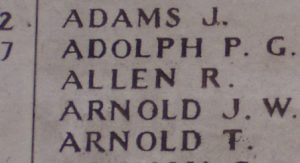
Reginald Archer, MM, Private, 21927, Machine Gun Corps. Reginald was born in Knottingley, Yorkshire in 1893, the son of Abraham Archer and Sarah Hannah Archer (nee Wake). Just after 1911, the family moved to 36, York Street, Oswestry, but Reginald moved to Welshpool, where he found work as a Clerk for a motor dealership. Reginald then gained a position with another motor dealer in Cambridge. He enlisted into the 1st Battalion, Cambridgeshire Regiment at Cambridge in September 1914 and joined the battalion at the Barracks at Corn Exchange Street, Cambridge, where it was attached to East Midland Brigade, East Anglian Division. The battalion then moved to Romford then to Long Melford and finally to Bury St. Edmunds. During February 1915 the battalion left the East Anglian Division and on 14 February embarked for France, landing at Havre on the following day, joining 82 Brigade, 27th Division at Dickebusch. The battalion saw its first major action when the Germans attacked their lines neat St. Eloi on 14 March 1915. The battalion was in reserve when the Division launched a counterattack at St. Eloi on 27 March but saw heavy fighting the following month following the first gas attacks at Gravenstafel, which heralded the opening of the Second Battle of Ypres. On 26 May the Division moved to the Armentieres Sector, where it remained until moving to the Somme on 19 September, taking over positions near Chuignes. On 29 October the Division was withdrawn and moved to Thieulloy L’Abbaye near Amiens and the 1st Cambridgeshire’s left the Division, joining the 3rd Army School at Flixecourt as a Training Battalion, whilst the 27th Division embarked for Salonika. On 29 February 1916 the Battalion joined 118 Brigade, 39th Division at Wallon Cappel, before moving into trenches around Pont du Hem. On 4 March 1916 the 118th Company, Machine Gun Corps was formed within the Division and Reginald transferred over to this new unit at Wallon Cappel on that date. The coming weeks were spent reorganising and training before the new 118th Company, MGC took over positions at The Moated Grange, in the Festubert and Givenchy sector. The Division remained here until August 1916 when it moved south, to take part in the great Somme offensive, taking over old trenches at Thiepval. Reginald was awarded the Military Medal soon afterwards, for carrying a message across No Man’s Land to the CO of a battalion in front of his company’s MG positions. Within days of the award being published in the London Gazette, on 14 October 1916 the 39th Division launched an assault on the strongly defended Schwaben Redoubt. Reginald was killed in action during the terrible fighting that day whilst carrying his machine-gun forward into the newly captured trenches. The 23-year-old has no known grave and is commemorated on the Thiepval Memorial, France.
Joseph Vincent Arnold, Lieutenant, Royal Air Force. Joseph was the son of James and Mary Arnold, of Chadderton, Oldham. He was an engineer prior to the war and resided at Welshpool, enlisting there into the Montgomeryshire Yeomanry on 30 September 1914. He was originally posted to the 1/1st Battalion, Montgomeryshire Yeomanry in Norfolk, but on 30 March 1915 was transferred to the 2/1st Battalion, gaining his first promotion, to Lance Corporal soon afterwards. In December 1915 Joseph was commissioned into the Royal Welsh Fusiliers and on 13 July 1916 was drafted to France, joining one of the regiments front-line battalions. After almost two years at the front, Joseph volunteered for the Royal Air Force and returned to Britain, joining the 38th Training Depot Station at Tadcaster for pilots training. On 3 September 1918 Joseph was flying an Avro 504, Serial B8762 on a formation flight from Tadcaster when he collided with another aircraft and was sent crashing to the ground, killing him instantly. The remains of the 26-year-old were recovered from the wreckage, and he was buried in Philips Park Cemetery, Manchester. Joseph’s name must have been a late addition to the Welshpool war memorial, as it is second to last at the end of the towns fallen.
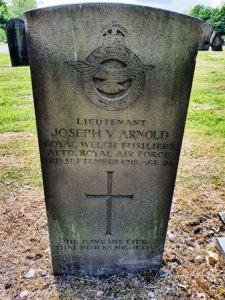
William Pryce Astley, Private, 203413, Royal Welsh Fusiliers. William was the son of Joseph and Elizabeth Astley, of Llanfair Caereinion. William had served with the 5th Battalion, South Wales Borderers and with the Montgomeryshire Yeomanry for several years as a young man, prior to returning to Llanfair Caereinion and becoming a Carpenter. He married Frances Alice Furnival on 1 February 1908, and the couple lived at Tan-y-Fron, Llanfair Caereinion, where they had four children over the coming years. William re-enlisted into the army on 4 December 1915, joining the 7th Battalion, Royal Welsh Fusiliers at Welshpool, and was initially placed on the Army Reserve. He was mobilised on 16 June 1916, joining the 4th (Reserve) Battalion, Royal Welsh Fusiliers at Park Hall Camp, Oswestry. He embarked at Southampton for France on 7 December 1916, and after disembarking at Le Havre joined the 5th Infantry Base Depot at Rouen, before being posted to the 1/4th Battalion, Royal Welsh Fusiliers. The battalion was by then the Pioneer Battalion to the 47th (2nd London) Division, and was at Ypres, based at the Pioneer Camp. Conditions in the camp were harsh, as the Flanders winter was hard, with William joining the battalion in sleet and snow. The men were worked hard, continually on working parties behind the front, repairing roads, constructing, and repairing defences and carrying supplies to the front. During the first week of February the 4th RWF supplied working parties to assist in underground tunnelling at The Bluff, as well as carrying out the construction of a trench tramway and light railway, while two companies worked at Railway Dugouts and Woodcote Farm. William took ill on 24 February and was evacuated to Hospital, being admitted to the 13th Stationary Hospital at Boulogne on 26 February. Sadly, his condition worsened, and he died of pleural effusion on 30 March 1917. The 37-year-old was buried in Boulogne Eastern Cemetery, France.
Alfred Ernest Baines, Sergeant, 355037, Royal Welsh Fusiliers. Alfred was the son of Pryce Baines and Jane Baines (nee Lloyd), of 5, Bebb’s Passage, Welshpool. He married Frances Maria Tucker in 1902 and the couple lived at 2, Smithfield Buildings, Salop Road, Welshpool with their two sons. Alfred worked as a Clerk at Welshpool prior to enlisting into the Montgomeryshire Yeomanry on 16 May 1910, stating that he had ten years previous service with the 4th (Volunteer) Battalion, South Wales Borderers. He attended every annual TA summer camp over the coming years, until the outbreak of war in August 1914. On 5 August 1914 the Montgomeryshire Yeomanry was mobilised at Welshpool, as part of the South Wales Mounted Brigade, before moving via Hereford to Thetford, to join the 1st Mounted Division. On 4 March 1916 the 1st Mounted Division sailed for Egypt to join the EEF. Alfred returned home on leave in October 1916 and whilst returning to Egypt following his leave, boarded the RMS Ivernia at Marseilles. On 1 January 1917, the Ivernia, carrying some 2,400 British troops, was torpedoed and sunk some 58 miles south-east of Cape Matapan in Greece. Alfred survived the sinking and was rescued, so by 13 January 1917 was back in Egypt, re-joining the Montgomeryshire Yeomanry at Alexandria. On 4 March 1917 the battalion merged with the Welsh Horse Yeomanry to form the 25th (Montgomery & Welsh Horse Yeomanry) Battalion, Royal Welsh Fusiliers, as part of the newly formed 231 Brigade, 74th (Yeomanry) Division. The Division assembled in Egypt as part of the EEF, before crossing the Suez Canal into the Sinai, and saw its first major action during the Second Battle of Gaza. The battle was a failure, and the EEF was re-organised under a new commander, Sir Edmund Allenby, before launching the Third Battle of Gaza on the night of 31 October 1917. In the meantime, Alfred had taken ill soon after his return to Egypt earlier in the year and had been discharged from the army as medically unfit on 1 August 1917 after being diagnosed as suffering from chronic nephritis. He returned home to Welshpool where he died of nephritis on 15 August 1917. The 36-year-old is buried in St. Mary’s Churchyard, Welshpool. His brother, Pryce Baines, died in Egypt in 1919. Alfred’s widow, Frances, also lost her brother, John William Tucker, in France in 1917.
Pryce Baines, Company Quartermaster Sergeant, T/328217, Royal Army Service Corps. Pryce was the son of Pryce Baines and Jane Baines (nee Lloyd), of 5, Bebb’s Passage, Welshpool. He had served with the 5th (Volunteer) Battalion, South Wales Borderers for several years as a young man and then during the Boer War with the Imperial Yeomanry before returning home to Welshpool, where he was an Ironmonger. Pryce married Louise Gregory at Wrexham on 30 September 1908, but she sadly died in 1913, so Pryce then married Ada Ellen Woolrich (nee Rayner), a widow, from Shrewsbury in 1914. Pryce continued to serve with the Montgomeryshire Yeomanry over the years prior to the war. On 5 August 1914 the Montgomeryshire Yeomanry was mobilised at Welshpool, as part of the South Wales Mounted Brigade, before moving via Hereford to Thetford, to join the 1st Mounted Division. On 4 March 1916 the 1st Mounted Division sailed for Egypt to join the EEF. On 4 March 1917 the battalion merged with the Welsh Horse Yeomanry to form the 25th (Montgomery & Welsh Horse Yeomanry) Battalion, Royal Welsh Fusiliers, as part of the newly formed 231 Brigade, 74th (Yeomanry) Division. By now Pryce was getting too old for infantry service and on 20 April 1917 he was transferred to the Camel Transport, Army Service Corps. Pryce served throughout the Palestinian campaign over the coming months and after the Armistice returned to Egypt. He took ill just after Christmas 1918 and was taken to the 44th Stationary Hospital at Kantara for treatment but died there of dysentery on 9 January 1919. The 45-year-old is buried in Kantara War Memorial Cemetery, Egypt. His brother, Alfred Ernest Baines, had died in 1917 of sickness contracted on active service.
Arthur Edward Barrs, Private, 277433, Manchester Regiment. Arthur was born at Brompton Hall, Churchstoke, the son of Walter Cope Barrs and Elizabeth Barrs (nee Hay). After his father’s death the family moved to 7, Cobden Street, Welshpool. Arthur was educated at Welshpool Grammar School and just after his seventeenth birthday enlisted into the Royal Welsh Fusiliers. Arthur was drafted to France in July 1917 and was transferred to the 20th Battalion, Manchester Regiment. The battalion was at Bullecourt attached to 22 Brigade, 7th Division and had seen heavy fighting there over the previous months. The battalion was hard at work on the St. Leger to Vraucourt defences when Arthur joined its ranks, then moved out of the line to begin a training scheme. On 29 August the Division moved out of the area and entrained for Godewaersvelde and carried out further training before moving into the Ypres Salient by 29 September, taking up positions at Polygon Wood, relieving the Australians. The 20th Manchester’s moved into the new front-line east of Polygon Wood and on 1 October beat off a German counterattack. Two days later the battalion was relieved and moved back to a camp at Zillebeke Lake to rest, then on 7 October moved back into the firing line via Hooge Crater. Arthur was killed in action on the following day, 9 October 1917, when the battalion was subjected to an intense artillery bombardment. The 19-year-old has no known grave and is commemorated on the Tyne Cot Memorial, Belgium.
Reginald Russell Bell, Lance Corporal, 632618, London Regiment. Reginald was born at Lincoln on 9 February 1896, the son of William Bell and Fanny Bell (nee Law). He enlisted into the London Regiment at Lincoln soon after the outbreak of war and was posted to the 2/20th (Blackheath and Woolwich) Battalion, London Regiment. The battalion had landed in France in June 1916 attached to 180 Brigade, 60th Division, then in November had moved to Egypt with the Division to take part in the Palestinian campaign. On 30 June 1918 the battalion left the 60th Division and embarked for France, joining 198 Brigade, 66th Division at Abancourt. Reginald married Edith Maud Beatrice Evans, a nurse, of Bodlondeb, Gungrog Lane, Welshpool whilst on leave at Welshpool on 24 July 1918. He returned to France soon afterwards, re-joining his battalion at Thievres, just prior to it being transferred to 185 Brigade, 62nd (West Riding) Division on 9 August. On 14 August the battalion moved to Vauchelles, and on 24 August joined the great offensive, moving to positions at Courcelles. On 25 August, units of the 62nd Division captured Mory before beating off German attacks at Vraucourt and Vaulx-Vraucourt. The Division continued its advance over the coming weeks, capturing Havrincourt on 12 September, then two weeks later it captured Marcoing and Masnières, important crossings of the Saint-Quentin Canal. Reginald was badly wounded during this period of heavy fighting and was evacuated to No 4 General Hospital at Étaples, where he died of his wounds on 10 October 1918. The 22-year-old is buried in Étaples Military Cemetery, France.
Oscar Bentley, Private, 7022, 5th (Royal Irish) Lancers. Oscar was born on 18 June 1887, the son of Edwin Bentley and Sarah Bentley (nee Morris), of Welshpool. By the turn of the century the family had moved to 10, Bloomfield Road, Blackpool. Oscar was lodging in London by 1911, working as a labourer, and married Beatrice Price at Blackpool just prior to the war. He enlisted at Preston into the 5th (Royal Irish) Lancers and was posted to Dublin to join the regiment, which was attached to the 3rd Cavalry Brigade. The 5th Lancers embarked for France in August 1914 and took part in the Battle of Mons, then in the subsequent retreat to the Marne. Oscar was drafted to France as a reinforcement for the regiment on 5 November 1914, joining the 5th Lancers at Ypres. He must have been wounded at some time and was posted back to Dublin with the Reserve Cavalry Regiment. On 24 April 1916 Oscar was on patrol in Sackville Street, Dublin when the patrol was ambushed by Irish Republicans. Oscar and four other men were killed in the melee, Oscar being shot in the neck. Oscar was 28 years old when he was killed that day and is buried in a mass grave, together with his fellow soldiers and two Irish rebels in the grounds of the Eastern Health Board offices in Kilmainham, Ireland.

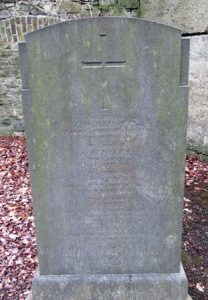
Charles Trevor Bishop, Second Lieutenant, Wiltshire Regiment. Charles was born in Grantham in 1889, the son of William Bishop and Margaret Elizabeth Bishop (nee Price). By 1901 the family had moved to 33, Broad Street, Welshpool, where Charles’ father ran his own Chemist business. By 1911 Charles was working as a Chemist’s Assistant in Blundellsands, near Liverpool. He enlisted at Liverpool into the Royal Army Medical Corps and was posted to the 1st County of London Field Ambulance, RAMC. Charles was posted to Malta with the unit and had been promoted to Sergeant before gaining a commission as Second Lieutenant into the 8th Battalion, Wiltshire Regiment in August 1915. He was then posted to the 5th Battalion, Wiltshire Regiment, which was in Mesopotamia attached to 40 Brigade, 13th (Western) Division. The Division had seen service at Gallipoli and in Egypt before moving to Mesopotamia on 12 February 1916, to strengthen the force being assembled for the relief of the besieged garrison at Kut al Amara. Charles disembarked at Basra on 23 September 1916 and joined the battalion in the field. The Division then fought at the Battle of Kut al Amara, then at the capture of the Hai Salient and the capture of Dahra Bend. They took part in the passage of the Diyala, in the pursuit of the enemy towards Baghdad, and part of the Division were the first British troops to enter Baghdad. During the rest of March and April 1917, operations were undertaken to consolidate the position won at Baghdad, by pushing north across Iraq, and the Division fought at Delli Abbas, Duqma, Nahr Kalis, crossed the Adhaim, and fought at Shatt al Adhaim. On 29 March 1917 the 13th Division was advancing along the Nahrwan Canal when the 5th Wiltshire’s, leading the advance, came under heavy shellfire. Charles was killed in action during the day. The 27-year-old was buried on the battlefield near Sindiyah, but his grave was subsequently lost, so he is commemorated on the Basra Memorial, Iraq.
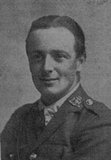
Herbert Bowen, Private, 20962, Coldstream Guards. Herbert was born at Gadlas, near Ellesmere, Shropshire in 1884, the son of Thomas and Ellen Bowen. His father died in 1897 and the family moved to Victoria Street, Ellesmere. Herbert married Gertrude Mary Roberts, of Myddle, in 1910 and the couple set up home at 11, Berriew Street, Welshpool, where Herbert ran his own Drapery store. The couple had two children, Gertrude and Herbert, both born in Welshpool. Herbert enlisted into the Coldstream Guards in December 1916 and was drafted to France in October 1917, joining the 2nd Battalion, Coldstream Guards. The battalion was attached to the Guards Division and moved to the Cambrai sector the following, following several periods of heavy fighting at Passchendaele. Herbert saw his first major action during the Battle of Cambrai and took part in heavy fighting during the German counter-offensive. The Guards Division remained in the area over the final winter of the war and was stationed near Athies when the German Spring Offensive hit the area on 21 March 1918 and two days after moved into support positions, behind the desperate troops fighting at the front. Herbert appears to be the sole casualty suffered by the battalion when it was relieved on 30 March 1918, before marching to billets at Hendecourt. He was 34 years old and is buried in Bucquoy Road Cemetery, Ficheux, France.
Job Breeze. Job cannot presently be identified; however, he may be George Breese, below:
George Breese, Private, 355441, Royal Welsh Fusiliers. George was the son of George Samuel and Martha Breese, of Dysgwlfa, Aberhafesp. He worked as a Butler to Canon Woosnam at Aberhafesp Hall prior to enlisting into the Police Force on 11 July 1912. George had married Margaret Eleanor Evans on 20 June 1912, and the couple set up home at Pentre Cottage, Aberhafesp. George served as a Policeman at Newtown then at Welshpool prior to enlisting there into the Montgomery Yeomanry in July 1915. He was first posted to Ireland, and in January 1917 was posted to Egypt to join the 25th Battalion, Royal Welsh Fusiliers, which was attached to 231 Brigade, 74th (Yeomanry) Division. The Division had formed in Egypt in January 1917 and had fought through the Palestinian Campaign, at the Battles of Gaza and the Battle and capture of Jerusalem. George was accidentally killed in Palestine on 22 November 1917, aged 28, and is buried in Deir El Belah War Cemetery, Israel. He is also commemorated on the new Dyfed Powys Police war memorial in Carmarthen.
William Breeze, Private, 238021, Leicestershire Regiment. William was the son of David Breeze, of Berriew. He enlisted into the Montgomeryshire Yeomanry at Welshpool soon after the outbreak of war. William married Lucy Jones, of The Abbey, Pool Quay on 26 June 1916. He was then transferred to the Welsh Regiment at Kinmel Park. William was drafted to France in the winter of 1917-18, and was transferred to the 1st Battalion, Leicestershire Regiment. The battalion was attached to 71 Brigade, 6th Division and had suffered heavy casualties whilst fighting on the Hindenburg Line near Flesquières during the Battle of Cambrai. William probably joined the battalion whilst it was resting at Bellacourt in December. On 2 January 1918 the battalion moved back into the line at Courcelles, then on 18 January took over positions at Moeuvres. The battalion was holding the line in the Lagnicourt Sector when the Germans launched their Spring offensive of 21 March 1918, along a section of the front stretching south from Croisilles to La Fère and saw terrible fighting over the coming days whilst trying to hold the Vaulx to Morchies Line. The battered Division was withdrawn on 24 March and entrained at Doullens for Proven, to rest in the quieter Flanders area, but on 9 April the Germans launched the second phase of their offensive along the Lys Valley and the Division was once more caught up in terrible fighting. By August 1918 the Allies had built up enough strength in order to launch their own offensives and following a brilliant victory at Villers Bretonneux on 8 August, attacks were launched at Albert across the old Somme battlefields from 21 August. The 6th Division was moved to Holnon some weeks later, then a month later launched its own offensive towards Selency, with its objectives being strong points known as the Quadrilateral and Chateau, which were part of the outer defensive system of St. Quentin. The division’s last two major assaults of the war came during October, where the Division captured Bohain on 8 October, and on 18 October the Division captured the high ground overlooking the Sambre–Oise Canal. William was wounded during the assault and died of his wounds on the following day, 19 September 1918. The 26-year-old has no known grave and is commemorated on the Vis-en-Artois Memorial, Haucourt, France. (There is one man names William Breeze on the Welshpool war memorial, but two possible men).
William Edward Breeze, Private, 290821, Royal Welsh Fusiliers. William was born in Welshpool in 1895, the son of David Abraham Breeze and Jane Breeze (nee Lewis). By 1911 the family was residing at Groeslwyd, Guilsfield. William worked as a gardener prior to enlisting into the 7th Battalion, Royal Welsh Fusiliers at Welshpool on 9 November 1914. The battalion was a Territorial unit, which mobilised for war at Newtown in August 1914, as part of North Wales Brigade, Welsh Division and moved to Conway until the end of the month, before moving to Northampton. In December the Division moved to Cambridge and then in May 1915 to Bedford, where the Division was numbered and the formation became 158 Brigade, 53rd (Welsh) Division. On 19 July 1915 the entire Division sailed from Devonport for Imbros and on 9 August 1915 landed at Suvla Bay. The infantry moved off the beaches across the Salt Lake, under shellfire, into the scrub covered Chocolate Hill, but due to a lack of maps and no knowledge of the terrain, many of the units became disorientated, and the situation became chaotic. The Division was eventually evacuated from Gallipoli in December 1915, moving to Egypt to join the EEF, and helped guard the Suez Canal before taking part in operations to drive the Turks out of the Sinai. The EEF then turned its attention onto driving the Turks out of Palestine, and on 26 March 1917 launched its first offensive against the coastal city of Gaza, which guarded the road to Jerusalem. Initial gains during the day were lost when the assaulting divisions lost touch with each other, and communication broke down when a thick fog cloaked the battlefield. A second attempt to force Gaza was launched on 17 April, which also failed, and the EEF suffered a change in leadership, with Sir Edmund Allenby assuming command, before being re-organised, and a third offensive was launched against a wider front from Beersheba to Gaza on 31 October 1917. This time the Turkish defences were breached, and the road to Jerusalem now lay open and the EEF began to advance north. On 6 November 1917, 158 Brigade launched an attack on the Khuweilfeh Heights, and once secured, the EEF continued its advance into the Judean Hills, the 53rd Division capturing Hebron and Bethlehem, before securing the Jerusalem to Jericho Road. Allenby finally made his triumphant entry into Jerusalem on 11 December. Over the following months the EEF continued to advance northwards through the Jordan Valley, before Turkey capitulated on 30 October 1918. Sadly, William did not live to see the Armistice with Turkey. He had taken ill just a few weeks previously and died of pneumonia in hospital at Ramleh on 28 October 1918. The 23-year-old is buried in Ramleh War Cemetery, Israel. (There is one man named William Breeze on the Welshpool war memorial, but two possible men).
James Buckley Brick, Private, SS/15477, Royal Army Service Corps. James was the son of James and Mary Brick, of Welshpool. He had enlisted into the 9th Lancers in 1891, but left eighteen months later, marrying his brother David’s widow Annie Brick (nee Roberts) in 1893 and the couple resided at 5, Hall Street, Welshpool, where James was an Inn Keeper. The family had moved to Torquay prior to the war. James re-enlisted into the army in London on 24 August 1915, joining the Army Service Corps and was posted to the Depot at Aldershot. James embarked at Devonport for the Mediterranean aboard the HT Minneapolis on 12 September 1915, joining the 18th Labour Company, Army Service Corps at Mudros on 28 September. Just weeks after arriving at Mudros James took ill and was admitted to No 1 Canadian Stationary Hospital, where he died of dysentery on 2 December 1915. The 47-year-old was buried in Portianos Military Cemetery, Lemnos, Greece.
Bertrand George Claffey, Lance Corporal, 4180821, Royal Welsh Fusiliers. Bertrand was born in Welshpool on 22 December 1893, the son of James Sylvester Claffey, a former soldier, and Eleanor Claffey (nee Hughes). He enlisted into the 3rd Battalion, Royal Welsh Fusiliers in May 1908 and whilst stationed in Dublin in 1912, married Catherine Moore. When war erupted, Bertrand was in Malta with the 1st Battalion, Royal Welsh Fusiliers. The battalion was then rushed back to England. He embarked for France with the battalion at Southampton aboard the SS Winifredian on 4 October 1914 and disembarked at Zeebrugge on 7 October. The 1st RWF was attached to 22 Brigade, 7th Division, and had gone to Zeebrugge to defend the port, but it was already in the process of falling to the Germans, so the 7th Division moved out of the city, marching via Bruges to Ostend, where the Division then entrained for Ghent. The Division then marched to Meirelbeke, and dug in defensive positions, in support of the French and Belgians. It soon became apparent that the Germans had broken through the Belgian lines, so on 11 October the 7th Division received orders to withdraw, reaching Hansbeke by the following day, and over the coming days continued to withdraw, marching through Thielt to Roulers, and by 14 October reached Ypres, becoming the first British Division to hold the city. The remainder of the BEF moved to Ypres from the Marne soon afterwards, in time to take part in the desperate defence of Ypres, when the Germans began attacking the city on 19 October. Bertrand was wounded and taken prisoner during a German counterattack at Ypres on 30 October 1914 and was sent to the Wittenberg POW after recovering from his wounds. He remained in captivity for the duration of the war, arriving back in Britain on 3 January 1919 and returned home to his wife in Dublin. Bertrand’s health had broken down whilst in captivity and he died of tuberculosis in Dublin on 26 February 1921. The 27-year-old is buried in Grangegorman Military Cemetery, Ireland. His uncle, Joseph Claffey, died at sea in 1915.
Joseph Claffey, Private, 6755, South Wales Borderers. Joseph was the son of James and Hanna Claffey, of Welshpool. He enlisted into the 2nd Battalion, South Wales Borderers on 9 May 1889 and served in the Boer War of 1899-1902. Upon his return to Britain, in 1905 he married Mary Wilson Ward, a domestic servant from Whitby, at Salisbury. Joseph continued to serve with the South Wales Borderers over the coming years, so his wife lodged at 32, Oriel Road, North End, Portsmouth, where their daughter, Noreen, was born in 1906. Joseph was in China with the 2nd Battalion, South Wales Borderers when war broke out and he took part in the famous raid on the German held port of Tsingtao in September 1914 in conjunction with the Japanese. On 4 December 1914 the 2nd SWB embarked at Hong Kong and landed at Plymouth on 12 January, moving to Rugby to join 87 Brigade, 29th Division. On 17 March 1915 the Division sailed from Avonmouth for Alexandria, then sailed to Mudros before taking part in the landings on Gallipoli on 25 April 1915, seeing heavy fighting during the day. The Division remained on Gallipoli over the coming months and saw further terrible fighting before the severe winter set in. Joseph began to suffer from his health as winter neared and was evacuated back to Britain, where he died of heart disease on 28 October 1915. The 38-year-old is buried in Netley Military Cemetery, Hampshire. His nephew, Bertrand, died of tuberculosis contracted during his time as a POW in 1919.
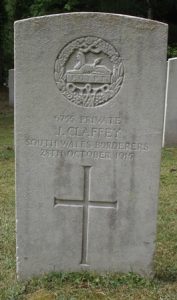
Arthur Davies, Private, 50386, Machine Gun Corps. Arthur was born in Malpas in 1883, the son of Martha Elizabeth Davies. The family had moved to Welshpool at some time after 1901 and lived at 3, Clifton Street, Welshpool. Arthur enlisted at Welshpool into the 7th Battalion, Royal Welsh Fusiliers and was posted to the 3/7th Battalion, Royal Welsh Fusiliers, at Park Hall Camp, Oswestry for training. He was drafted to Egypt later in the war and in February 1918 was posted to the 53rd Battalion, Machine Gun Corps, which was attached to the 53rd (Welsh) Division. The Division had taken part in the Gallipoli campaign in 1915 before moving to Egypt and from March 1917 onwards had taken part in the campaign to drive the Turks out of Palestine. The Division captured Jerusalem by December 1917 and continued to advance northwards over the coming months, crushing the Turks. Arthur took ill towards the end of the war and was transferred to the 17th General Hospital at Alexandria. He died there of pneumonia on 4 November 1918. The 25-year-old is buried in Alexandria (Hadra) War Memorial Cemetery, Egypt. Arthur is not commemorated on the Welshpool war memorial.
Benjamin William Charles Davies, Private, 9959, Northumberland Fusiliers. Benjamin, known as Charles, was born in Welshpool on 16 April 1883, the son of Joseph Davies and Rose Davies (nee Parry). By 1901 he was lodging at Ystradfodwg, where he worked as a coal miner. He had returned to Welshpool by 1909 and married Sarah Ann Wildblood that year. The couple then lived at 108, Tallis Street, Cwmparc, Treorchy. Charles was an army reservist and re-enlisted into the 1st Battalion, Northumberland Fusiliers at Pontypridd soon after the outbreak of war and joined the battalion at Portsmouth, where it was attached to 9 Brigade, 3rd Division. Landing at Le Havre on 14 August 1914 the 3rd Division was among the first Divisions to move to France, moving to the Belgian frontier near Mons with the BEF. The Division then fought during the opening Battle of Mons, and in the epic retreat, from the Rearguard Action of Solesmes, through the Battle of Le Cateau, and down to the Marne, where the German Offensive was stopped. The BEF followed the German withdrawal to the Aisne, where they met them in battle, and stopped the advance on Paris. The BEF then moved north to Flanders in the first days of October. The 3rd Division left Vailly on 1 October and over the coming days marched to Pont St. Mayence, where it entrained on 6 October, reaching Abbeville the following day. By 9 October the battalion had taken up billets in Tollent, near Robecq. Over the coming days the battalion moved into the front line and saw heavy fighting, during actions at Pont du Hem, Herlies and Neuve Chapelle. Charles was posted as missing at some time on or since 9 October 1914 during this chaotic period. No trace of the 31-year-old was ever found, so he was officially recorded as having been killed in action on that date. Charles is commemorated on the Le Touret Memorial, Richebourg-L’avoue, France. He is commemorated on the Welshpool war memorial simply as Charles Davies.
Charles Moses Davies, Sergeant, 290120, Royal Welsh Fusiliers. Charles was the son of Edward Davies and Eliza Matilda Davies (nee Cingrie), of 5, Norfolk Place, Welshpool. He lived at 12, Raven Street, Welshpool and worked as a labourer prior to enlisting into the 7th Battalion, Royal Welsh Fusiliers on 28 May 1912 and attended the annual TA summer camp every year until the outbreak of war. The battalion was a Territorial unit, which mobilised for war at Newtown in August 1914, as part of North Wales Brigade, Welsh Division and moved to Conway until the end of the month, before moving to Northampton. In December the Division moved to Cambridge and then in May 1915 to Bedford, where the Division was numbered and the formation became 158 Brigade, 53rd (Welsh) Division. On 19 July 1915 the entire Division sailed from Devonport for Imbros and on 9 August 1915 landed at Suvla Bay. The infantry moved off the beaches across the Salt Lake, under shellfire, into the scrub covered Chocolate Hill, but due to a lack of maps and no knowledge of the terrain, many of the units became disorientated, and the situation became chaotic. The Division was eventually evacuated from Gallipoli in December 1915, moving to Egypt to join the EEF, and helped guard the Suez Canal before taking part in operations to drive the Turks out of the Sinai. The EEF then turned its attention onto driving the Turks out of Palestine, and on 26 March 1917 launched its first offensive against the coastal city of Gaza, which guarded the road to Jerusalem. Initial gains during the day were lost when the assaulting divisions lost touch with each other, and communication broke down when a thick fog cloaked the battlefield. A second attempt to force Gaza was launched on 17 April, which also failed, and the EEF suffered a change in leadership, with Sir Edmund Allenby assuming command, before being re-organised, and a third offensive was launched against a wider front from Beersheba to Gaza on 31 October 1917. This time the Turkish defences were breached, and the road to Jerusalem now lay open and the EEF began to advance north. On 6 November 1917, 158 Brigade launched an attack on the Khuweilfeh Heights. Charles was killed in action during the attack that day. The 24-year-old is buried in Beersheba War Cemetery, Israel.
David Davies, Private, W/932, Cheshire Regiment. David was the son of Thomas and Eliza Davies, of The Pwll, Powis Castle, Welshpool. He was working at Port Sunlight prior to the war and enlisted there into the 13th Battalion, Cheshire Regiment. The battalion was raised at Port Sunlight by Gershom Stewart, MP in September 1914, before moving to Chester, and on the following month moved to Salisbury Plain joining 74 Brigade, 25th Division. The battalion moved to billets in Bournemouth for the winter, then in May 1915 moved to Aldershot for final training before the entire Division embarked for France on 25 September 1915. The Division then moved to Flanders for trench initiation before taking over the Vimy area, where the Division defended Vimy Ridge against a German attack in May 1916. The Division then moved to the Warloy area and attacked on 3 July near Thiepval, at the village of La Boiselle. The 13th Cheshire’s remained in reserve for the initial assault, then on 6 July took over the front line, which the troops consolidated before settling in for the night. At dawn on the following morning, 7 July 1916, the 13th Cheshire’s went over the top but got mown down by machine-gun fire, suffering over 250 casualties. David was among the men killed during the charge that morning. The 27-year-old is buried in Ovillers Military Cemetery, France.
Gilbert Bryan Davies, Bombardier, 328956, Canadian Field Artillery. Gilbert was born on 14 May 1884, the son of Thomas William Davies and Mary Bryan Davies (nee Richards), of The Bank, Welshpool. He emigrated to Canada in 1908 and married prior to the war, living with his wife, Gertrude Beatrice Davies, at 1009, Eastlake Avenue, Saskatoon, Saskatchewan. Gilbert enlisted into the 15th Overseas Brigade, Canadian Field Artillery at Regina on 30 March 1916. Gilbert embarked at Halifax with the Brigade for England aboard the SS Cameronia and disembarked at Liverpool on 22 September 1916, where the Brigade entrained for Witley Camp. Gilbert was then posted to the 14th Brigade, Canadian Field Artillery and embarked for France with the Brigade on 21 August 1917. The Brigade then entrained at Le Havre for Lillers before taking up positions near Lievin and over the coming weeks held different positions in the Loos sector, where it remained over the coming months. On 9 June 1918 the Brigade had been carrying out some routine barrages, before answering a distress call from a neighbouring unit. During the afternoon, Gilbert was behind the line with the wagon lines when the Germans opened a salvo of heavy artillery fire upon the position, killing him instantly. The 34-year-old was buried the following day in Écoivres Military Cemetery, Mont-St. Eloi, France. His brother, William Bryan Davies, died in France in 1916.
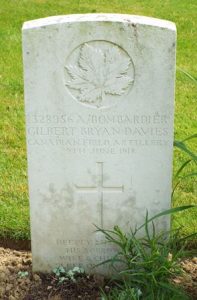
James Wilfred Davies, Private, 3642, Machine Gun Corps. James was the son of Edward Davies and Mary Elizabeth Davies (nee Ellis), of Bryneglwys, Welshpool. He served his apprenticeship as a joiner with his cousin at Bilston as a young man, before moving to Hertfordshire to work. James enlisted into the Bedfordshire Regiment at Hitchen soon after the outbreak of war and trained as a machine-gunner before being transferred to the 51st Company, Machine Gun Corps. The Company had formed in February 1916, moving to The Bluff, near Ypres, joining the 17th Division. The Division saw heavy fighting at the Bluff during February 1916 before moving south in June 1916 to the Fricourt sector on the Somme. The Division then fought during the opening offensives of the Battle of the Somme, where it captured the village of Fricourt at heavy cost. The Division remained on the Somme throughout the battle and wintered in the area of Bronfay Farm before being transferred to the Arras Sector in March 1917. The Division then saw action during the Battle of Arras, which opened on 9 April 1917. After weeks of fighting, a large-scale offensive was launched on 23 April, known as the Second Battle of the Scarpe, where the British attacked to the east along an approximate 9-mile front from Croisilles to Gavrelle on both sides of the Scarpe. James was killed in action during heavy fighting around the village of Roeux on 24 April 1917. The 22-year-old has no known grave and is commemorated on the Arras Memorial, France. One of his brothers, Owen Harold Davies, had been killed nearby some weeks earlier whilst serving with the Canadians. (James is shown simply as Wilfred Davies on the memorial).
Joseph Ithel Jehu Davies, Second Lieutenant, Royal Welsh Fusiliers. Joseph was born on 10 August 1894, the son of Joseph Henry Davies and Sarah Evans Davies (nee Morris), of Ty Coch, Welshpool. He was educated at Welshpool Grammar and County Schools before entering Armstrong College, Durham University, where he graduated BSC. Joseph was a member of the University OTC and excelled in sports. He was commissioned into the 8th Battalion, Royal Welsh Fusiliers on 16 December 1914 and was drafted to France in October 1915, joining the 1st Battalion, Royal Welsh Fusiliers. The battalion was attached to 22 Brigade, 7th Division and was holding the Cambrin Sector, near Loos. The Division moved to the Givenchy Sector soon afterwards, remaining there until December when it moved to Montagne to carry out a course of instruction. At the end of January 1916, the 7th Division moved south to the Somme, taking over a section of the line near The Citadel, Facing Fricourt. It remained here over the coming months and on 1 July 1916 took part in the opening assault of the Battle of the Somme, capturing the village of Mametz, one of the few successes of the day. The Division then fought at the Battle of Bazentin Ridge, and the Attacks on High Wood, playing a successful part in the ‘dawn attack’, and were also the first troops into High Wood. By the beginning of September, the 7th Division was in the line at Longueval Alley, preparing to launch an assault on the strongly defended village of Ginchy. Joseph was given command of D Company, after Captain Jones was invalided with shellshock and on the morning of 3 September 1916 led his new command forward under the cover of an artillery barrage to take part in the assault. Joseph was mortally wounded that day, during hand-to-hand combat with a party of Germans and died soon afterwards. The 22-year-old is buried in Delville Wood Cemetery, Longueval, France. There is a memorial to him in Christ Church Churchyard at Welshpool.

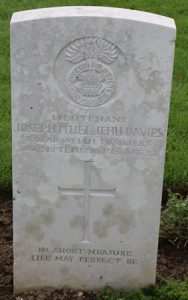
Owen Harold Davies, MM, Private, 443864, Canadian Infantry. Owen was born on 29 January 1892, the son of Edward Davies and Mary Elizabeth Davies (nee Ellis), of Bryneglwys, Welshpool. He worked as a telegraph linesman prior to emigrating to Canada in January 1913 and moved to Revelstoke, British Columbia, where he worked as a linesman for the Canadian Pacific Railway. Owen enlisted into the Canadian Infantry at Revelstoke on 29 August 1915 and was posted to Vernon Camp, joining the 54th Battalion, Canadian Infantry. The battalion then entrained for Halifax, where it embarked for England aboard the SS Saxonia on 22 November 1916. The Saxonia docked in Plymouth on 1 December and the battalion disembarked before moving to Bramshott, Hampshire to complete its training. On 14 August 1916 the battalion landed at Le Havre as part of the 11th Infantry Brigade, 4th Canadian Division, and moved to the southern sector of the Ypres Salient. The Division remained at Ypres for a short while, holding the notorious St. Eloi sector, then in September the entire 4th Canadian Division was relieved, before beginning its move south to join the great Somme offensive. By 11 October the 54th Battalion had reached Albert, before moving forwards into the front line near Courcelette and saw heavy fighting during the battles for Regina Trench over the coming weeks. Owen, a former member of the Red Cross, was a battalion stretcher-bearer and was awarded the Military Medal for Bravery in the Field for rescuing and dressing wounded men whilst under heavy shellfire during the Somme offensive. Soon afterwards he contracted pneumonia and was evacuated to the 12th Canadian Field Ambulance before being hospitalised. He returned to duty on 15 November 1916, after ten days in hospital. At the end of November, the Canadians left the Somme and moved north of Arras, to positions facing Vimy Ridge. Owen was formally presented with his Military Medal in camp at Berthonval on 10 January 1917. By now the Canadians were busy, working on preparations to take part in the forthcoming Battle of Arras and at dawn on 9 April 1917 the Canadian Corps launched its famous assault on the Vimy Ridge. Owen was killed in action during the assault that morning. The 25-year-old is buried in Canadian Cemetery No.2, Neuville-St. Vaast, France. Owen is commemorated on war memorials in Revelstoke, British Columbia and on a plaque inside Welshpool Methodist Church. His brother, James Wilfred Davies, was killed nearby just weeks later.
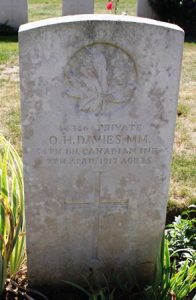
William Bryan Davies, Second Lieutenant, Sherwood Foresters (Notts and Derby Regiment). William was the son of Thomas William Davies and Mary Bryan Davies (nee Richards), of The Bank, Welshpool. He worked as a store manager in Bournemouth prior to the war. William was commissioned into the Sherwood Foresters in January 1916 and joined the 1/6th Battalion, Sherwood Foresters in France on 18 July 1916. The battalion was attached to 139th Brigade, 46th (North Midland) Division and was at Bellacourt, near Bailleulval when William arrived, and the Division was holding a sector in the Arras front. Less than two weeks later, William and four other officers were posted to the 139th Trench Mortar Battery and in the middle of August the Battery set up new gun positions at Bellacourt. Just weeks afterwards William appeared to have suffered some form of breakdown and was sent to an Officers Hospital at Lucheux. During the afternoon of 17 September 1916 William was found dead, the result of a revolver bullet wound to his head, apparently self-inflicted. The 35-year-old was buried in Avesnes-Le-Comte Communal Cemetery Extension, France. His brother, Gilbert Bryan Davies, was killed in France in 1918.
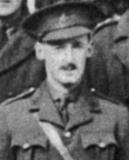
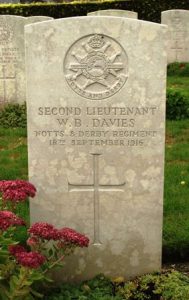
Arthur Herbert Dunk, Gunner, 177366, Royal Garrison Artillery. Arthur was born in Peckham in 1885, the son of George Dunk and Rosina Dunk (nee Flint). He worked as an Attendant at the City of London Lunatic Asylum prior to the war and in 1913 married Mary Winifred Constantine, a Nurse in the Asylum. Mary was from Welshpool and returned there to live at 8, Gungrog Lane, Salop Road, Welshpool after Arthur enlisted into the Royal Garrison Artillery soon after the outbreak of war. Arthur was posted to the 256th Siege Battery, Royal Garrison Artillery and embarked for France with the Battery on 8 February 1917. Arthur was wounded during the Battle of Cambrai later that year but returned to duty after recovering. He had served with the Battery on the Western Front for almost 18 months before becoming wounded and was evacuated back to England, to the Norfolk War Hospital, where he died of his wounds on 14 September 1918. The remains of the 33-year-old were brought back to London for burial in Plaistow Cemetery, Bromley, Kent.
David William Edwards, Lance Corporal, 3636, Montgomeryshire Yeomanry. David was born in Welshpool in 1882, the son of William and Jane Edwards. He lived with his wife Mary and their two daughters at 1, Mill Plan, Welshpool, where he worked as a tailor. David enlisted into the Montgomeryshire Yeomanry and was posted to the 3/1st Battalion, Montgomeryshire Yeomanry at Park Hall Camp, Oswestry. David became ill in the spring of 1915, contracting pneumonia and was sent home to Welshpool where he died of double pneumonia on 21 May 1915. The 33-year-old was buried with full military honours in Christ Church Churchyard, Welshpool four days later. Oddly, David’s name is an addition to the Welshpool war memorial, yet is incorrect, as the memorial states Edwards, David E. There is no man of this name with links to Welshpool who fell, so David William Edwards must be correct?
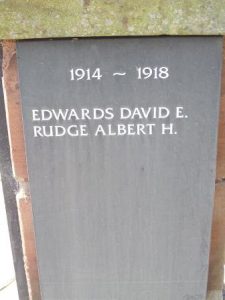

George Evans, Private, 291083, Royal Welsh Fusiliers. George was the son of John Evans and Ann Evans (nee Wood), of Watergate, Llanfair. He worked as a Roadman prior to the war and had married Mary Breese at Llandyssil on 16 June 1906. George enlisted into the 7th Battalion, Royal Welsh Fusiliers at Newtown on 10 May 1915. The battalion was a Territorial unit, which mobilised for war at Newtown in August 1914, as part of North Wales Brigade, Welsh Division and moved to Conway until the end of the month, before moving to Northampton. In December the Division moved to Cambridge and then in May 1915 to Bedford, where the Division was numbered and the formation became 158 Brigade, 53rd (Welsh) Division. On 19 July 1915 the entire Division sailed from Devonport for Imbros and on 9 August 1915 landed at Suvla Bay. The infantry moved off the beaches into the bush, but due to a lack of maps and no knowledge of the terrain, many of the units became disorientated, and the situation became chaotic. The Division was eventually evacuated from Gallipoli in December 1915, moving to Egypt to join the EEF, and helped guard the Suez Canal before taking part in operations to drive the Turks out of the Sinai. The EEF then turned its attention onto driving the Turks out of Palestine, and on 26 March 1917 launched its first offensive against the coastal city of Gaza, which guarded the road to Jerusalem. Initial gains during the day were lost when the assaulting divisions lost touch with each other, and communication broke down when a thick fog cloaked the battlefield. George was captured by the Turks during the battle, and was taken to a PoW Camp at Bore, near Nigle, Iraq. Prisoners held by the Turks were kept in abysmal conditions and were often put to work in mines and quarries. George took ill whilst in captivity and died of dysentery in Iraq at some time between 25 November and 12 December 1918. The official date of his death is recorded as 29 November 1918. The 36-year-old is buried in Baghdad (North Gate) War Cemetery, Iraq. His brother, Walter, died on active service in 1915.
George Evans, Private, 12502, Royal Welsh Fusiliers. George was born in Welshpool in 1893, the son of Thomas Evans and Eleanor Evans. By 1911 the family had moved to 18, Lower Terrace, Cwmdare, where George and his brother Thomas worked as coalminers. George enlisted into the 8th Battalion, Royal Welsh Fusiliers at Pentre soon after the outbreak of war. The battalion was formed at Wrexham in August 1914, joining 40 Brigade, 13th (Western) Division at Salisbury Plain. The Division embarked at Avonmouth on 28 June 1915 for Gallipoli and on 16 July began landing at Cape Helles, taking over trenches in Gully Ravine. At the end of the month the 8th RWF moved back to Mudros, then on 4 August 1915 landed at Anzac Cove in order to support the Anzac offensive, marching to Russell’s Top and Monash Gully before attacking and capturing Turkish positions known as the Chessboard. George was seriously wounded during the fighting which followed and was evacuated off the Peninsula by Hospital Ship to Alexandria. He died of his wounds in hospital there on 7 October 1915. The 22-year-old is buried in Alexandria (Chatby) Military & War Memorial Cemetery, Egypt.
George Herbert Evans, Private, 290252, Royal Welsh Fusiliers. George was born in Welshpool in 1878, the son of James and Mary Evans. He married Annie Weaver at Welshpool on 26 February 1897 and the couple initially lived at Newtown before moving to 4, James Street, Brithdir by 1911, where George had found work as a coalminer at The Naval Colliery, Penygraig. George had served for several years with the 5th (Volunteer) Battalion, South Wales Borderers as a young man and following the outbreak of war re-enlisted at Newtown into the 7th Battalion, Royal Welsh Fusiliers on 29 August 1914. The battalion was a Territorial unit, which mobilised for war at Newtown in August 1914, as part of North Wales Brigade, Welsh Division and moved to Conway until the end of the month, before moving to Northampton. In December the Division moved to Cambridge and then in May 1915 to Bedford, where the Division was numbered and the formation became 158 Brigade, 53rd (Welsh) Division. On 19 July 1915 the entire Division sailed from Devonport for Imbros and on 9 August 1915 landed at Suvla Bay. The infantry moved off the beaches across the Salt Lake, under shellfire, into the scrub covered Chocolate Hill, but due to a lack of maps and no knowledge of the terrain, many of the units became disorientated, and the situation became chaotic. After the fighting died down, the winter rolled in, and the men first had to endure torrential downpours, which flooded the trenches, before the snow hit, and many men began falling ill in the terrible conditions.…The Division was eventually evacuated from Gallipoli in December 1915, moving to Egypt to join the EEF, and helped guard the Suez Canal before taking part in operations to drive the Turks out of the Sinai. The EEF then turned its attention onto driving the Turks out of Palestine, and on 26 March 1917 launched its first offensive against the coastal city of Gaza, which guarded the road to Jerusalem. Initial gains during the day were lost when the assaulting divisions lost touch with each other, and communication broke down when a thick fog cloaked the battlefield. George was killed in action during the assault that day. The 39-year-old is buried in Gaza War Cemetery, Israel.
James William Evans, Corporal, 290999, Royal Welsh Fusiliers. James was the son of David and Annie Evans, of Welshpool. He married Mary Elizabeth Jones in 1902 and the couple resided at 2, Daxes Row, Welshpool. James worked as a Brewer prior to the war. He enlisted into the 2/7th Battalion, Royal Welsh Fusiliers at Welshpool on 8 March 1915, stating that he had previously served for twelve years with the 4th Battalion, South Wales Borderers. James was then posted to Park Hall Camp, Oswestry, joining the 3/7th Battalion, Royal Welsh Fusiliers for training and on 9 December 1916 embarked for the Mediterranean after being posted to the 1/7th Battalion, Royal Welsh Fusiliers. The battalion was attached to 158 Brigade, 53rd (Welsh) Division and had been evacuated from Gallipoli in December 1915, moving to Egypt to join the EEF, and helped guard the Suez Canal before taking part in operations to drive the Turks out of the Sinai. The EEF then turned its attention onto driving the Turks out of Palestine, and on 26 March 1917 launched its first offensive against the coastal city of Gaza, which guarded the road to Jerusalem. Initial gains during the day were lost when the assaulting divisions lost touch with each other, and communication broke down when a thick fog cloaked the battlefield. A second attempt to force Gaza was launched on 17 April, which also failed, and the EEF suffered a change in leadership, with Sir Edmund Allenby assuming command, before being re-organised, and a third offensive was launched against a wider front from Beersheba to Gaza on 31 October 1917. This time the Turkish defences were breached, and the road to Jerusalem now lay open and the EEF began to advance north. On 6 November 1917, 158 Brigade launched an attack on the Khuweilfeh Heights, and once secured, the EEF continued its advance into the Judean Hills, the 53rd Division capturing Hebron and Bethlehem, before securing the Jerusalem to Jericho Road. Allenby finally made his triumphant entry into Jerusalem on 11 December and after safeguarding the city the EEF continued to advance northwards into the Jordan Valley. James was killed in action during a Turkish counterattack on 28 December 1917. The 46-year-old is buried in Jerusalem War Cemetery, Israel.
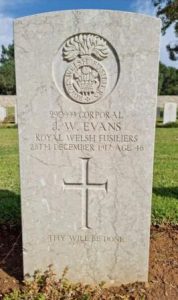
John Evans, Private, 81230, North Irish Horse. John was the son of James Evans, of 18, Stanley Street, Welshpool. He worked as a Hawker prior to the war. John had enlisted into the 7th Battalion, Royal Welsh Fusiliers at Welshpool on 17 June 1913 and just months later married Alice Hughes, of Mount Pleasant, Welshpool. John attended two annual TA summer camps, at Rhyl and at Aberystwyth prior to the outbreak of war. The 7th Battalion, Royal Welsh Fusiliers was a Territorial Army battalion and mobilised for war at Newtown in August 1914, as part of North Wales Brigade, Welsh Division and moved to Conway until the end of the month, before moving to Northampton. In December the Division moved to Cambridge but by 1 April 1915 John was found to be partially deaf in one ear and he was discharged as medically unfit. He then went to work in a Munitions Factory but in July 1917 was called up and was posted to the 2/7th Battalion, Royal Welsh Fusiliers. John was drafted to France early in 1918 and was transferred to the North Irish Horse. John’s Squadron within the Regiment is not specified, but he was mortally wounded during the great advance towards the end of the war and died of his wounds in a casualty clearing station near Awoingt on 25 October 1918. The 25-year-old is buried in Awoingt British Cemetery, France.
Lewis Evans, Private, 1002, Royal Welsh Fusiliers. Lewis was the son of Robert and Catherine Lewis, of Gornant Uchaf, Dyffryn. He enlisted at Welshpool into the 7th Battalion, Royal Welsh Fusiliers. The battalion was a Territorial unit, which mobilised for war at Newtown in August 1914, as part of North Wales Brigade, Welsh Division and moved to Conway until the end of the month, before moving to Northampton. In December the Division moved to Cambridge and then in May 1915 to Bedford, where the Division was numbered and the formation became 158 Brigade, 53rd (Welsh) Division. On 19 July 1915 the entire Division sailed from Devonport for Imbros and on 9 August 1915 landed at Suvla Bay. The infantry moved off the beaches into the bush, but due to a lack of maps and no knowledge of the terrain, many of the units became disorientated, and the situation became chaotic. Lewis was killed in action during heavy fighting on the following day, 10 August 1915, aged 22. He has no known grave and is commemorated on the Helles Memorial, Gallipoli.
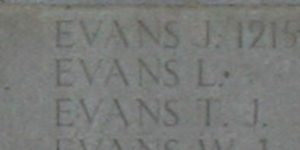
Thomas Leonard Evans, Private, 2309, Montgomeryshire Yeomanry. Thomas was the son of John Rees Evans and Jane Evans (nee Fewtrell), of Welshpool. He was raised by his grandparents at 1a, Three Tuns Passage, High Street, Welshpool and worked in the town as a Clerk prior to the war. Thomas enlisted at Welshpool into the Montgomeryshire Yeomanry. On 5 August 1914 the Montgomeryshire Yeomanry was mobilised at Welshpool, as part of the South Wales Mounted Brigade, before moving via Hereford to Thetford, to join the 1st Mounted Division. On 4 March 1916 the 1st Mounted Division sailed for Egypt to join the EEF. Thomas had not long been in Egypt before he took ill and he died in hospital at Fayum, Cairo on 7 July 1916. The 23-year-old is buried in Cairo War Memorial Cemetery, Egypt.
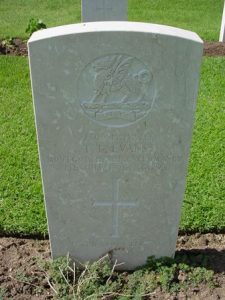
William Herbert Evans, Private, 7851, King’s Shropshire Light Infantry. William was the son of Edward and Ann Evans, of Welshpool. He had enlisted into the King’s Shropshire Light Infantry as a young man and had served for several years before leaving the army in 1908, becoming a Postman at Wrexham. As a former soldier, William was mobilised from the Army Reserve soon after the outbreak of war and married Mary Emily Owen, of Pwllyglo, Welshpool, at Wrexham on 29 September 1914, just before entraining for Pembroke Dock to join the 3rd Battalion, King’s Shropshire Light Infantry. The battalion was the regiments reserve unit and was on garrison duty at Pembroke Dock until moving to Edinburgh in November 1914. During March 1915 the battalion moved back to Pembroke Dock. William embarked for France on 19 May 1915, joining the 2nd Battalion, King’s Shropshire Light Infantry at Busseboom on 21 May. The battalion was attached to 80 Brigade, 27th Division, which was holding the line at Hooge and Railway Wood and was enjoying a short rest from duties in the front line following heavy fighting during the Second Battle of Ypres. On 24 May 1915 the Germans launched a poison gas attack against the 28th Division and the 4th Division, so the men of the 2nd KSLI were roused from their tents and ordered back into the line, marching via the line of the Ypres to Roulers railway. At dawn the following day, 25 May 1915, the battalion launched an assault on Bellewaarde Farm, but suffered terrible casualties before being forced to withdraw. William was among around 200 men killed during the failed assault that morning. The 39-year-old has no known grave and is commemorated on the Ypres (Menin Gate) Memorial, Belgium. His widow, Mary, died at Welshpool in 1923.
Thomas Farr, Private, 55208, Royal Welsh Fusiliers. Thomas was born in Radnorshire in 1886. He married Sarah Lucy Allen, of Ivy House, Welshpool, early in 1915, whilst based there with the Montgomeryshire Yeomanry, and she gave birth to their only child, Thomas Allen Farr, on 5 December 1915. Thomas did not embark for Egypt with the Montgomery Yeomanry in 1916, but was instead transferred to the 2nd Battalion, Royal Welsh Fusiliers. The battalion was on the Western Front attached to 19 Brigade, 33rd Division, and had seen heavy fighting during the Somme offensive during the summer of 1916. Thomas most probably joined the battalion after the cessation of the Somme offensive. The 33rd Division wintered in the Somme valley, holding the Clery Sector. The Division then followed the German withdrawal to the Hindenburg Line, reaching trenches at Henin, facing the Hindenburg Line, by 15 April 1917. On 19 April the 2nd RWF took over the front line at Croisilles and on 23 April launched an assault against the mighty Hindenburg Line from the direction of Mercatel. Fierce fighting raged throughout the day, and the battalion suffered terrible casualties before being relieved the following day. Thomas had been killed during the fighting on 23 April 1917. The 31-year-old is buried in Heninel-Croisilles Road Cemetery, France.
John Fitzhenry, Private, 9956, King’s Shropshire Light Infantry. John was the son of John Fitzhenry and Elizabeth Fitzhenry (nee Evans), of Welshpool. He enlisted into the army into the King’s Shropshire Light Infantry at Shrewsbury on his eighteenth birthday and embarked for France with the 1st Battalion, King’s Shropshire Light Infantry on 10 September 1914. The battalion landed at St. Nazaire, attached to 16 Brigade, 6th Division which had been despatched to reinforce the hard-pressed BEF on the Aisne, before the whole army was moved north into Flanders. John married Elizabeth Lila Yeadon at Oswestry whilst back home on leave in the spring of 1915. The Division saw its first major action during the Action of Hooge in June 1915, when the Germans attacked using flamethrowers for the first time and remained in Flanders until moving south to the Somme at the beginning of August 1916. The Division initially moved to the Engelbelmer area and took over the line facing Beaumont Hamel. The Division endured a torrid time here over the coming days, suffering sporadic shellfire and trench mortar barrages. The 1st KSLI had its HQ in cellars in Auchonvillers during its time here, some of which still survive today. At the end of the month the Division moved out of the line to billets around Naours and a week later moved forwards again to positions near Corbie, where the men practised advancing behind a creeping artillery barrage. The Division then moved into a different section of the front at Guillemont to take part in the fighting for the village of Morval. The 1st KSLI moved into the front line near Leuze Wood on the afternoon of 15 September and again endured several days of heavy shellfire upon their positions. On 18 September the battalion moved into positions on the right of the Ginchy to Combles railway to launch an assault upon the Quadrilateral position, clearing it by the end of the day. On the following day the battalion was relieved and moved to billets at Morlancourt but on the morning of 21 September began to march forwards again, back into the battle zone. The men were put to work digging a new line of trenches northeast of Ginchy and at midday on 25 September 1916 launched an assault from the new trenches towards the ridge between Morval and Lesboeufs. John was killed in action during the assault that afternoon. The 26-year-old has no known grave and is commemorated on the Thiepval Memorial, France.

William Albert Gittins, Corporal, 79838, Canadian Infantry. William was born on 20 February 1892, the son of Thomas Gittins and Sarah Ann Gittins (nee Hawkins), of 45, Mount Street, Welshpool. He trained as an Architect prior to emigrating to Canada and embarked at Liverpool aboard the White Star liner RMS Canada on 7 February 1914. William enlisted at Edmonton into the 31st Battalion, Canadian Infantry on 26 November 1915, stating that he had previous service with the Montgomeryshire Yeomanry. On 17 May 1915, the battalion sailed for England aboard the RMS Carpathia, and completed its training in England before embarking for France as part of the 6th Brigade, 2nd Canadian Division. William landed at Le Havre with the 31st Battalion, CEF on 16 September 1915, and the 2nd Canadian Division moved to the Ypres Salient. William had not been at the front long when his health broke down and he suffered several spells in hospital suffering from influenza and tuberculosis during his first winter at the front. He was back in action by the time that the Division took part in the Actions of the St. Eloi Craters from 27 March 1916 and then took part in the terrible fighting at Mount Sorrel in June. The Canadians moved to the Somme in August and relieved the Australians in front of Mouquet Farm, eventually capturing the farm and then seizing Courcelette and Regina Trench. William was granted ten days leave in October 1916 and returned home to visit his family in Welshpool. He re-joined his battalion on the Somme, prior to the Canadian’s move to a new sector north of Arras, facing Vimy Ridge, which the Canadians assaulted and seized on 9 April 1917. The Canadians took part in several more actions at Arras, then later that year moved north to join the great fight for Passchendaele Ridge. William was killed in action during the final assaults on the ridge on 6 November 1917. The 24-year-old has no known grave and is commemorated on the Ypres (Menin Gate) Memorial, Belgium.
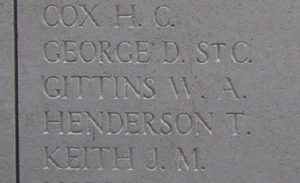
John Waring Griffiths, Private, 21242, King’s Shropshire Light Infantry. John was born at Berriew in 1880, the son of Sarah Jane Griffiths. His mother married John Waring in 1899 and the family moved to 1, Quarry Place, Welshpool. John worked for his great uncle, John Griffiths, at Pensarn Farm, Berriew and then worked for Mr. Hughes, at Marton Hall prior to enlisting into the King’s Shropshire Light Infantry at Welshpool in May 1916. He was drafted to France in the winter of 1916-17 and was posted to the 1st Battalion, King’s Shropshire Light Infantry, which was attached to 16 Brigade, 6th Division and joined the battalion at Vermelles, near Loos. The battalion was relieved from the line early in January and moved to a training school near Noyelles, before going back into the line northeast of Vermelles on 9 January, to begin a routine tour in the trenches. The Division remained here over the coming weeks, its infantry battalions rotating between four-day tours in the front line, coupled with four days in reserve and four in support, following what was by then the standard system. On 9 April 1917 the Canadians launched an assault to the south, at Vimy Ridge, and consequently, four days later the Germans withdrew their right flank in the sector held by the 6th Division. The 1st KSLI was put at notice to Stand-To and be ready to advance while other units of the 6th Division mounted an attack, but the attack failed. The 1st KSLI was relieved during the morning of 17 April 1917, but just prior to its relief sent out a patrol, consisting of the men of C Company, which was ordered to locate the new German front-line. John was sent out on this patrol but was killed during heavy fighting when the Germans were engaged. The 36-year-old is buried in Dud Corner Cemetery, Loos, France.
Arthur Joseph Hamer, Private, 203056, Royal Welsh Fusiliers. Arthur was the son of Rice and Emily Hamer, of Downton Farm, New Radnor. He had spent some time in Canada before the war but returned to enlist into the Montgomeryshire Yeomanry on 8 December 1914. He married Maud Ellen Pugh, of The Cock Hotel, Welshpool whilst on leave in 1916. Arthur did not embark for overseas service with the Montgomeryshire Yeomanry, who went to Egypt, but was transferred to No 5 Infantry Base Depot, before being posted to the 1/4th Battalion, Royal Welsh Fusiliers on 6 January 1917. The battalion was on the Somme, attached to the 47th (2nd London) Division. Early in 1917 the Division moved north to Belgium, and took part in the Battle of Messines, and then in November 1917 fought at the Battle of Cambrai. In March 1918 the Division was situated near St. Quentin, and faced the German Spring Offensive here on 21 March, taking part in heavy fighting whilst retreating to the Somme valley. Arthur was badly wounded during the withdrawal to the Somme, and died of his wounds on 7 April 1918, aged 32. He is buried in Hérissart Communal Cemetery, France. His only son, Laurence Frederick Joseph Pugh Hamer, was born on 10 October 1918, six months after his death. His brother, Fred, also fell, but is not commemorated on the Welshpool war memorial. Arthur’s nephew, Lawrence Pugh, was also killed during the war.
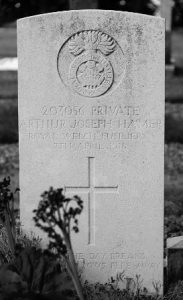
Frederick George Hamer, Private, 55226, Royal Welsh Fusiliers. Frederick was the son of Rice and Emily Hamer, of Downton Farm, New Radnor. He worked on the family farm prior to enlisting into the Shropshire Yeomanry at Downton, Wiltshire. He was posted to France, probably in the summer of 1916 and joined the 2nd Battalion, Royal Welsh Fusiliers, which was attached to 19 Brigade, 33rd Division. The division saw heavy fighting on the Somme, especially during the fighting around High Wood. During March 1917 the 2nd RWF spent almost the entire month training in Camp 13, near Suzanne. It was during this month that one of the battalions most famous officers, Rupert Graves, was sent home sick. At the beginning of April, the division began moving to the Arras sector and on 15 April 1917 the 2nd RWF moved into the trenches facing the Hindenburg Line, to which the Germans had retreated, in order to release some divisions to be sent to the Russian Front. Two days later the battalion was relieved and moved into bivouacs near Mercatel and on 20 April moved back into the front line. On 23 April 1918 the 2nd RWF took part in an attack against the Hindenburg Line and throughout the day took part in desperate hand-to-hand fighting. By the end of the day, the battalion had lost five officers and 32 men killed; seven officers and 70 men wounded; and five men missing, for no gain. Among those killed during the day was Frederick Hamer. He was 23 years old and is buried in Heninel-Croisilles Road Cemetery, France. His mother received a letter from an officer of the battalion sometime later, which read: ‘It is with sad regret I have to inform you of the death of your son, who was killed in action during the very heavy fighting on the 23rd of April. His body was recovered and buried on the battlefield, with his comrades who fell with him. He was a fine man, and very brave and good. His comrades will miss him. His brother, Arthur, was killed a year later. Frederick is not commemorated on the Welshpool war memorial, despite being a regular visitor to his brother and sister-in-law at the Cock Hotel.
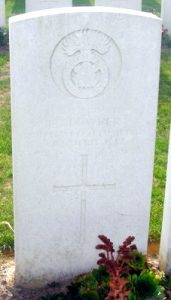
Arthur Charles Harding, Private, 28488, Welsh Regiment. Arthur was born at Nelson, Glamorgan in 1896, the son of John Harding and Emily Priscilla Harding (nee Griffiths). His father was from Berriew and his mother from Guilsfield, but young Arthur and his brother Henry spent a lot of time with their grandfather at Welshpool whilst growing up. The boy’s father John died in 1903 and their mother married John Daunton, a widower. One of John’s sons from his previous marriage, Walter Daunton, was killed during an accident in the Blaina Colliery at Ammanford on 8 January 1914. Arthur worked as a coalminer prior to enlisting into the 18th Battalion, Welsh Regiment at Treharris in the summer of 1915. The battalion was raised in January 1915 as a Bantam Battalion, made up of men of below average height, and initially went to Porthcawl attached to the 43rd (Welsh) Division. During July 1915 the battalion moved to Prees Heath to join 119 Brigade, 40th (Bantam) Division and landed in France with the Division in June 1916. The Division moved to positions around Lillers before taking over the North Maroc Sector, near Loos, for trench initiation and once acclimatised was left to hold the sector itself over the coming months. The infantry battalions of the Division then began the usual routines of rotating for duty in the trenches: normally four days in the front line; four in support and four in reserve. On 9 October 1916 the men of the 18th Welsh were enjoying a rare day in billets in support when a German shell crashed into one billet, killing Arthur and two other men and wounding a further 11. Arthur was 20 years old when he was killed that day and is buried in Maroc British Cemetery, Grenay, France. His mother also lost her brother, Edward Rees Griffiths, of Guilsfield, during the war.
William George Harding, Private, 12202, King’s Shropshire Light Infantry. William was the son of Moses Harding and Margaret Jane Harding (nee Pinches), of Bishops Castle. He enlisted at Shrewsbury into the King’s Shropshire Light Infantry on 7 September 1914 and was posted to the 6th Battalion, King’s Shropshire Light Infantry. The battalion formed at Shrewsbury in September 1914 before joining 60 Brigade, 20th (Light) Division at Aldershot and completed its training at Larkhill, Salisbury Plain before embarking for France, landing at Boulogne on 22 July 1915. The Division then moved to the Fleurbaix Sector for trench familiarisation and training. When the Battle of Loos was launched on 25 September 1915 the Division fought a diversionary attack towards Fromelles, suffering heavy casualties for no gain. Later that year the Division moved north into the Ypres Salient and fought at the Battle of Mount Sorrel alongside the Canadian Corps in June 1916. The Division then moved south to the Somme in July, to join the great Somme Offensive, and saw heavy fighting near Guillemont soon after its arrival. William was badly wounded on the Somme, suffering shrapnel wounds to his arms and was evacuated to hospital. He was discharged from the army as medically unfit on 1 September 1916 and after recovering moved to Welshpool. William married Edith May Clinton in 1919 and the couple lived at 27, Gungrog Terrace, Welshpool. The couple lived happily at Welshpool until William died on 28 December 1923, aged 28. Nothing further is known of him, as he is not commemorated as a war casualty by the CWGC. William is also not commemorated on the Welshpool war memorial.
Evan Harris, Private, 11970, South Wales Borderers. Evan was born in Llanfair Caereinion in 1874, the son of Thomas Harris. He had left home as a young man to enlist into the South Wales Borderers on 25 March 1895 and had served in South Africa during the Anglo-Boer War. Evan left the army after his return from South Africa, and on 28 June 1905 married Emma Jane Evans, of Welshpool. The couple then moved to 23, Barrett Street, Cwmpark, Rhondda, where Evan had gained work as a coal hewer. The couple had four children, two sons and two daughters, born prior to the war. Evan re-enlisted into the South Wales Borderers soon after the outbreak of war, and was initially posted to the 3rd Battalion, South Wales Borderers, which was at Pembroke Dock. Evan was drafted out to France early in 1916, joining the 1st Battalion, South Wales Borderers, which was in the Loos Sector attached to 3 Brigade, 1st Division. The Division had suffered heavily during the Battle of Loos from 25 September 1915, and in the subsequent action of the Hohenzollern Redoubt, so Evan would have been among several drafts who arrived as it was rebuilding its strength. By 3 January 1916, the 1st SWB was back in the front line at Loos, beginning a routine tour in the trenches. By now it was the usual routine for infantry battalions to rotate in the trenches, usually spending four days in the front line, four in support and four in reserve, interspersed with carrying out trench raids and carrying parties together with the odd longer spell away from the front, undergoing training schemes. By the middle of May the weather had become hot, and the men of the 1st SWB were put to work making ‘Chevaux de Frise’, or knife-rests as they were known by the British, to install in No Man’s Land during night patrols. On 19 May 1916, the battalion left this work to relieve the 2nd Munster’s in the front line to begin a routine spell in the trenches. As the relief was underway, the Germans opened a ferocious artillery bombardment upon the line, killing Evan and three other men, and wounding several others. Evan was 42 years old when he was killed that day, and is buried in Maroc British Cemetery, Grenay, France. His widow, Emma, returned to her native Welshpool with their four children, but sadly died in 1918, leaving them orphaned.
Walter James Harris, Private, 21, Army Cyclist Corps. Walter was the son of Thomas and Mary Harris, of 29, Raven Street, Welshpool. He was already serving with the 7th Battalion, Royal Welsh Fusiliers when war erupted. The battalion was a Territorial unit, which mobilised for war at Newtown in August 1914, as part of North Wales Brigade, Welsh Division and moved to Conway until the end of the month, before moving to Northampton. In December the Division moved to Cambridge and then in May 1915 to Bedford, where the Division was numbered and the formation became 158 Brigade, 53rd (Welsh) Division. Walter was then transferred from the 7th RWF to the 53rd Welsh Division Cyclist Company. On 19 July 1915 the entire Division sailed from Devonport for Imbros and on 9 August 1915 landed at Suvla Bay. The infantry moved off the beaches across the Salt Lake, under shellfire, into the scrub covered Chocolate Hill, but due to a lack of maps and no knowledge of the terrain, many of the units became disorientated, and the situation became chaotic. Walter was killed in action at Gallipoli less than two weeks later, on 22 August 1915. The 19-year-old is buried in Hill 10 Cemetery, Gallipoli.
Clement Hibbott, Private, 356019, Royal Welsh Fusiliers. Clement was born in Welshpool in 1890, the son of David Hibbott and Alice Mary Hibbott (nee Pryce). His father was a cabinet maker, and by 1891 had moved the family to Leek, in Staffordshire. By 1911 the family had moved back to Station View, Welshpool. Clement worked as a gardener at Powis Castle, and then at Glansevern Hall prior to the war. Clement enlisted into the 7th Battalion, Royal Welsh Fusiliers at Welshpool on 29 August 1914. The battalion was a Territorial unit, which mobilised for war at Newtown in August 1914, as part of North Wales Brigade, Welsh Division and moved to Conway until the end of the month, before moving to Northampton. In December the Division moved to Cambridge and then in May 1915 to Bedford, where the Division was numbered and the formation became 158 Brigade, 53rd (Welsh) Division. On 19 July 1915 the entire Division sailed from Devonport for Imbros and on 9 August 1915 landed at Suvla Bay. The infantry moved off the beaches into the bush, but due to a lack of maps and no knowledge of the terrain, many of the units became disorientated, and the situation became chaotic. After the worst of the fighting had calmed down, the campaign settled into a stalemate, but as winter came the conditions became unbearable, with the unsanitary conditions, torrential rain and snow bringing disease to the men in the trenches. Clement suffered frostbite towards the end of the campaign and was evacuated aboard the Hospital Ship Sudan hospital in Malta, before returning to England aboard the Hospital Ship Formosa. It was almost a year before Clement was fit enough to return to duty, and he embarked at Southampton for Egypt on 25 February 1917. He re-joined his old battalion on 24 March, just in time to take part in the First Battle of Gaza on 26 March 1917, where the EEF launched its first offensive against the coastal city of Gaza, which guarded the road to Jerusalem. Initial gains during the day were lost when the assaulting divisions lost touch with each other, and communication broke down when a thick fog cloaked the battlefield. A second attempt to force Gaza was launched on 17 April, which also failed, and the EEF suffered a change in leadership, with Sir Edmund Allenby assuming command, before being re-organised, and a third offensive was launched against a wider front from Beersheba to Gaza on 31 October 1917. This time the Turkish defences were breached, and the road to Jerusalem now lay open and the EEF began to advance north. Clement had been wounded during the fighting of 31 October and was evacuated to the 31st General Hospital at Port Said, where he died of multiple gunshot wounds to his back, ribs and thorax on 18 November 1917. The 27-year-old is buried in Port Said War Memorial Cemetery, Egypt.
Albert Edward Higgins, Private, 56983, Welsh Regiment. Albert was the son of David and Catherine Higgins, of Cunnant Cottage, Welshpool. He was serving an apprenticeship as a joiner on the Powis Castle Estate prior to enlisting into the 3/1st Battalion, Montgomeryshire Yeomanry at Welshpool on 1 June 1915 and was initially posted to Park Hall Camp, Oswestry and saw service in Ireland following the Easter uprising. Albert was then transferred to the 3rd Battalion, Welsh Regiment, which was at Redcar, on garrison duties. He embarked for France at Southampton on 8 August 1915, joining the 5th Infantry Base Depot at Rouen, and on 16 August was posted to the 10th Battalion, Welsh Regiment, which was at Ypres attached to 114 Brigade, 38th (Welsh) Division. The Division had moved to Ypres in September 1916 following its famous assault on Mametz Wood in July and took over the Canal Bank sector at Boesinghe. The infantry battalions of the Division then began carrying out the normal pattern of rotation in the trenches, four days in the front, four in support and four in reserve, whilst also working on trench improvement, digging new trenches, and carrying out regular patrols and trench raids. Albert became ill just months after arriving at the front and on 13 May 1917 he was admitted to the 131st Field Ambulance, suffering from influenza. Albert was taken to the 46th Casualty Clearing Station before being sent to the 27th General Hospital at Wimereux and was sent back to England aboard the Hospital Ship St. Patrick. After recovering, he re-embarked for France at Southampton on 7 September 1917 and upon his arrival at the 5th Infantry Base Depot was posted to the 15th Battalion, Welsh Regiment, known as the Carmarthen Pals battalion, which was attached to the same 114 Brigade as his former unit, the 10th Welsh. By the time Albert arrived back in Belgium, the Division had stormed and captured the Pilckem Ridge, then played a supporting role in the Battle of Langemarck. The Division was transferred to the Sailly-sur-la-Lys sector in September and remained in the area over the winter before being moved to positions north of Albert, at Bouzincourt Ridge, at the end of March 1918, relieving the battered 2nd and 47th Divisions. It held this sector, again carrying out minor operations and trench raids, over the coming months, before taking part in the great offensive of 21 August 1918, and began its advance towards the Hindenburg Line, crossing the old Somme battlefields of 1916, capturing Mametz Wood, Longueval and Delville Wood, before advancing towards the villages of Morval and Sailly-Saillisel. By now Albert had been temporarily attached to the 14th Welsh, in the same Brigade. He was killed in action on 4 September 1918 during the crossing of the Canal du Nord at Manancourt, in one of the finest feats undertaken by the Division during the war. The 21-year-old has no known grave and is commemorated on the Vis-en-Artois Memorial, Haucourt, France.
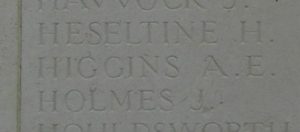
Edward Charles Hodge, Company Sergeant Major, 315603, Royal Welsh Fusiliers. Edward was born in Crickhowell in 1862 and had served with the 24th Regiment of Foot, South Wales Borderers, for over 22 years after having enlisted on 3 May 1879. He married Elizabeth Ann James at Brecon in 1881 and the couple had at least seven children over the coming years. Following Edward’s discharge from the army on 26 June 1901 he moved his family to Welshpool, where he had gained work as a Nightwatchman and a Fireman at Powis Castle. Edward re-enlisted into the 7th Battalion, Royal Welsh Fusiliers at Welshpool on 25 September 1914. The battalion was a Territorial unit, which mobilised for war at Newtown in August 1914, as part of North Wales Brigade, Welsh Division and moved to Conway until the end of the month, before moving to Northampton. Edward was then posted to the 2/7th Battalion, Royal Welsh Fusiliers, which was attached to 203 Brigade, 68th (2nd Welsh) Division at Bedford and became an instructor, being ideally placed to pass on all his experience to new recruits. On 1 January 1917 he was transferred to the 23rd Battalion, Royal Welsh Fusiliers, which was at Hemsby, Norfolk, and he served as Musketry Instructor there until the Armistice. Edward was demobilised on 27 May 1919 and returned home to his wife at Welshpool, but the rigours of almost five years’ service at his age proved too much and his health broke down. Edward died of rheumatic fever and bronchitis at Welshpool on 14 October 1922. The 60-year-old was buried at Welshpool four days later. Edward is not commemorated as a war casualty by the CWGC, and he is not commemorated on the Welshpool war memorial. His four sons all served during the war, one of which, Thomas Edward Hodge, was killed at Gaza in 1917.
Thomas Edward Hodge, Private, 290955, Royal Welsh Fusiliers. Thomas was born at Brecon on 11 October 1890, the son of Edward Charles Hodge and Elizabeth Ann Hodge (nee James). His father was a long serving soldier, stationed at Brecon with the South Wales Borderers, and upon his discharge in 1901 the family moved to 22, High Street, Welshpool. Thomas worked as a Butcher prior to enlisting into the 7th Battalion, Royal Welsh Fusiliers at Welshpool on 2 February 1915. The battalion was a Territorial unit, which mobilised for war at Newtown in August 1914, as part of North Wales Brigade, Welsh Division and moved to Conway until the end of the month, before moving to Northampton. In December the Division moved to Cambridge and then in May 1915 to Bedford, where the Division was numbered and the formation became 158 Brigade, 53rd (Welsh) Division. On 19 July 1915 the entire Division sailed from Devonport for Imbros and on 9 August 1915 landed at Suvla Bay. The infantry moved off the beaches across the Salt Lake, under shellfire, into the scrub covered Chocolate Hill, but due to a lack of maps and no knowledge of the terrain, many of the units became disorientated, and the situation became chaotic. After the fighting died down, the winter rolled in, and the men first had to endure torrential downpours, which flooded the trenches, before the snow hit, and many men began falling ill in the terrible conditions. The Division was eventually evacuated from Gallipoli in December 1915, moving to Egypt to join the EEF, and helped guard the Suez Canal before taking part in operations to drive the Turks out of the Sinai. The EEF then turned its attention onto driving the Turks out of Palestine, and on 26 March 1917 launched its first offensive against the coastal city of Gaza, which guarded the road to Jerusalem. Initial gains during the day were lost when the assaulting divisions lost touch with each other, and communication broke down when a thick fog cloaked the battlefield. Thomas was reported as being wounded and missing during the fighting that day. No trace of the 24-year-old was ever found, and he was later officially recorded as having been killed in action on that day, 26 March 1917, so Thomas is commemorated on the Jerusalem Memorial, Israel. One of his brothers, Charles Cyril Hodge, was wounded at Gaza on the same day, but survived the war. Their father, Edward Charles Hodge, also served throughout the war and died in 1922 as a result of ill-health brought about by his service.
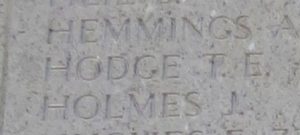
John Thomas Holloway, Private, 3516, Royal Welsh Fusiliers. John was the son of William and Sarah Holloway, of 9, Whittington Passage, Welshpool. He worked as a farm servant at Plas-y-Court Farm, Middletown prior to the war. John enlisted into the 7th Battalion, Royal Welsh Fusiliers at Wrexham soon after the outbreak of war. The battalion was a Territorial unit, which mobilised for war at Newtown in August 1914, as part of North Wales Brigade, Welsh Division and moved to Conway until the end of the month, before moving to Northampton. In December the Division moved to Cambridge and then in May 1915 to Bedford, where the Division was numbered and the formation became 158 Brigade, 53rd (Welsh) Division. On 19 July 1915 the entire Division sailed from Devonport for Imbros and on 9 August 1915 landed at Suvla Bay. The infantry moved off the beaches across the Salt Lake, under shellfire, into the scrub covered Chocolate Hill, but due to a lack of maps and no knowledge of the terrain, many of the units became disorientated, and the situation became chaotic. John was killed during the early stages of the landings, and was evacuated to hospital in Malta, where he died of his wounds on 24 August 1915. The 19-year-old is buried in Malta (Capuccini) Naval Cemetery, Malta. One of his brothers, Thomas, was wounded in France in 1918.
George Albert Howells, Private, 30505, Royal Welsh Fusiliers. George was the son of Richard and Francis Howells, of 4, Powell’s Row, Welshpool. He was lodging with Mr Vaughan at Brickyard Cottage, Abbey Cwmhir by 1911 and worked as an agricultural labourer. George enlisted at Welshpool into the Montgomeryshire Yeomanry on 12 April 1912 and attended the annual TA summer camps over the coming years. On 5 August 1914 the Montgomeryshire Yeomanry was mobilised at Welshpool, as part of the South Wales Mounted Brigade, before moving via Hereford to Thetford, to join the 1st Mounted Division. George was then transferred to the 4th (Reserve) Battalion, Royal Welsh Fusiliers and remained in Britain with the battalion until embarking at Devonport aboard the HT Royal George for Salonika on 10 October 1916, joining the 11th Battalion, Royal Welsh Fusiliers upon his arrival on 22 October. The battalion was attached to 67 Brigade, 22nd Division and had been in Salonika since moving from France in November 1915, having been sent as part of an Anglo-French force despatched to aid the Greeks following a combined Austro-Bulgarian invasion of neighbouring Serbia. The Salonika campaign had been mostly one of stalemate, with the Allies unable to break the enemy lines, until launching a huge offensive, the Second Battle of Doiran, on 18 September 1918. George was killed in action during the battle that day. The 29-year-old is buried in Doiran Military Cemetery, Greece.
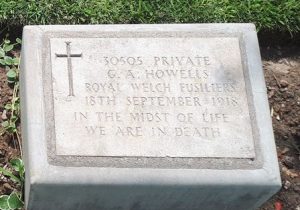
Alexander Hughes, Private, 33085, Machine Gun Corps. Alexander was the son of Edwin and Margaret Ann Hughes, of 7, Raven Street, Welshpool. He worked as a Collier prior to enlisting into the 3/7th Battalion, Royal Welsh Fusiliers at Newtown on 6 March 1915 and was posted to Park Hall Camp at Oswestry for training. He was subsequently transferred to the 1st Battalion, Machine Gun Corps at Grantham on 28 April 1916. Alexander was undergoing training as a machine-gunner when he began to suffer health problems, which began with him injuring a leg whilst shoeing a horse, during a farrier training course. He was treated at Cambridge Military Hospital at Aldershot, but then contracted tonsilitis, requiring further treatment at the Aldershot Isolation Hospital. Upon his discharge from hospital, other health issues materialised, and he was sent to the Lord Derby War Hospital at Warrington. A subsequent medical court found that he had been hospitalised at Salop Asylum from September 1913 until February 1915, when he enlisted into the Royal Welsh Fusiliers and his issues had begun to resurface in the form of dementia praecox, or as it is now known, schizophrenia. Alexander was discharged from the army as medically unfit on 23 January 1917, and was hospitalised at Salop Asylum once again, but died there on 9 March 1918. The 20-year-old is buried in Shrewsbury General Cemetery.
Richard Jenkins. Richard cannot presently be identified, as nobody of that name can be found with links to Welshpool, however, a man named Francis Henry Jenkins resided at Welshpool prior to the war and was killed in 1916:
Francis Henry Jenkins, Corporal, 10054, Royal Welsh Fusiliers. Francis was the son of Veterinary Surgeon Francis Henry Jenkins, M.R.C.V.S., and of Elle Jenkins (nee Stockham), of Stone, Staffordshire. He resided at Welshpool prior to enlisting into the 3rd Battalion, Royal Welsh Fusiliers at Wrexham. Francis embarked for France on 30 September 1915, joining the 1st Battalion, Royal Welsh Fusiliers. The battalion was attached to 22 Brigade, 7th Division which was holding the Cambrin Sector when Francis joined its ranks and remained there until the Division was relieved at the end of December, moving into reserve positions before being transferred to the Somme in February 1916, taking over the line around Bois Francais, facing Fricourt. The Division had taken part in the opening assault of the Somme offensive on 1 July 1916, advancing from its positions near Bois Francais and captured the village of Mametz, one of the few successes of 1 July 1916. The battalion then took part in further attacks to push forwards, to the south of Mametz Wood, and upon being relieved, witnessed the troops of the 38th (Welsh) Division moving forward to launch its assault on Mametz Wood. On 14 July, with the wood taken, the 7th Division moved back into the line, with orders to capture Bazentin-le-Petit, before taking part in the terrible attacks on High Wood over the coming days. On 22 July the 1st RWF was relieved, moving back into reserve to rest and rebuild at La Chaussee. By 12 August the battalion had moved forwards to Dernancourt, and on 26 August marched further forward, to take part in the Divisions assault on Ginchy. The Division saw heavy fighting over the coming days, before the 1st RWF had another short break, but on 1 September the battalion received orders to push forwards again to launch a fresh assault on Ginchy from Montauban Alley. On 3 September 1916 the 1st RWF launched its assault, but suffered severe casualties, with over 200 officers and men killed, wounded or missing. Francis was among the men killed that day. The 26-year-old has no known grave and is commemorated on the Thiepval Memorial, France.
James William Johnson, Regimental Sergeant Major, 5334, Montgomeryshire Yeomanry. James was born in 1879, the son of Richard George Johnson and Mary Johnson, of Stoke Newington, London. He enlisted into the army as a young man. James married Florence Elizabeth Lee at Walthamstow on 2 December 1915. He had over twenty years’ service with the 8th (King’s Royal Irish) Hussars before moving to 36a Broad Street, Welshpool with his wife Florence prior to the war, where he had become Acting Regimental Sergeant Major to the Montgomeryshire Yeomanry, and was based at The Armoury, Welshpool. On 5 August 1914 the Montgomeryshire Yeomanry was mobilised at Welshpool, as part of the South Wales Mounted Brigade, before moving via Hereford to Thetford, to join the 1st Mounted Division. James took ill whilst based in Norfolk and was hospitalised in London, where he died on 19 September 1916. The 39-year-old is buried in Nunhead (All Saints) Cemetery, England.
Charles Jones, Private, 4581, Australian Infantry. Charles was born at Oswestry in 1880, the son of Stephen and Eliza Jones. Following the death of his mother in 1890, Charles went to live with his elder brother, David, at Llwynderw Farm, Welshpool. He emigrated to Australia some years prior to the war and farmed in Western Australia. Charles enlisted into the 11th Reinforcements for the 28th Battalion, Australian Infantry at Blackboy Hill, Western Australia on 14 March 1916. On 31 March he embarked from Australia aboard HMT Minnetonka and after a brief stop at Alexandria disembarked in Plymouth on 12 June. On 25 July Charles was drafted to France, joining the 28th Battalion, Australian Infantry on the Somme. The battalion had served at Gallipoli before the Australians moved to France and was attached to the 7th Brigade, 2nd Australian Division. The 28th Battalion took part in its first major battle at Pozieres between 28 July and 6 August 1916. Charles was wounded at Pozieres but remained at duty. After a spell in a quieter sector of the front in Belgium, the 2nd Division returned to the south in October, where the 28th Battalion took part in costly fighting to the east of Flers, in the Somme Valley. Charles was wounded here for the second time on 17 November and was hospitalised for a while before re-joining the battalion a month later. The battalion had a quiet winter but was sent into action at Bullecourt in March 1917 and Charles was wounded here for the third time when he was shot in the nose. It was over two months later that he re-joined the battalion again, and he saw further fighting when the battalion took part in the Third Battle of Ypres, where it made a successful assault on the Menin Road, capturing its objectives in seven minutes, and was in reserve during the capture of Broodeseinde Ridge. The battalion was also in reserve for the battle of Poelcapelle on 9 October, but, with the attack floundering in the mud, it soon became caught up in the fighting once more. The battalion wintered in Belgium, but early in 1918 was transferred to the Somme again in response to the German spring offensive and saw heavy fighting around Villers-Bretonneux as the Allies fought to defend the vital railhead of Amiens. The battalion saw further fighting during the attack on Ville-sur-Ancre in May, then in July was involved in a minor action around Morlancourt. Charles was shot in the abdomen here on 16 July 1918, his fourth wound, and was evacuated to the 47th Casualty Clearing Station for treatment. Sadly, he died of his wounds there on the following day, 17 July 1918. The 38-year-old is buried in Crouy British Cemetery, Crouy-Sur-Somme, France. Charles is not commemorated on the Welshpool war memorial.
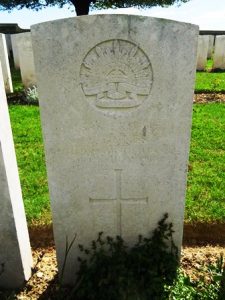
George Jones, Private, 204454, Somerset Light Infantry. George was the son of John and Mary Ellen Jones, of Tynllechwedd, Llangadfan. He was a farm labourer prior to the war. George enlisted into the Montgomeryshire Yeomanry at Welshpool, and was posted to Park Hall Camp, Oswestry for training. He was posted to France in the winter of 1917-18, and transferred to the 1st Battalion, Somerset Light Infantry, which was attached to 11 Brigade, 4th Division. During March 1918 the 4th Division was in the Arras sector, holding a section of front north of The Scarpe. On 21 March 1918 the Germans launched a huge offensive along a section of Western Front running from Croisilles to La Fère and broke through. The 4th Division was just north of the action, and saw no real fighting during this time, but nevertheless was forced to slowly withdraw. On 9 April the Germans switched their attention to a second offensive on the Lys, so the 4th Division was rushed north, taking over positions neat Mont-Bernanchon, on the La Bassée Canal, between St. Venant and Bethune, where it immediately encountered the enemy. Heavy fighting raged over the coming days as the line was pushed back again, and the following month the Germans switched their focus further south, to their third, and last offensive of 1918, on the Aisne. The 4th Division remained in the same positions over the summer, but following the combined British, Australian and Canadian success at Villers-Bretonneux on 8 August, from 21 August the Allies launched a massive offensive along the Western Front. The 1st Somerset Light Infantry were in the line when the offensive was launched to the south and received orders on the following day to support an assault by the 74th (Yeomanry) Division to their left. The attack was a failure due to short warning and a lack of preparation. George had been killed during the failed attack of 22 August 1918. The 22-year-old has no known grave and is commemorated on the Loos Memorial, France.
George Thomas Jones, Corporal, 5923, Welsh Regiment. George was born on 27 January 1883, the son of William and Eliza Jones, of 2, Cambrian Terrace, Llansantffraid-ym-Mechain. He married Winifred Powell at Llansantffraid in 1908 and the couple lived at Berriew, where George worked as a timber merchant. George was probably an army reservist, and upon being mobilized, embarked for France on 23 November 1914, joining the 2nd Battalion, Welsh Regiment at Ypres. The battalion was attached to 3 Brigade, 1st Division and had suffered heavy casualties during the opening months of the war, taking part in the Battle of Mons and the subsequent retreat to the Marne, and then helped stop the Germans at the Battles of the Marne and Aisne, before the BEF moved to Ypres. The Division had then played a vital role in stopping the Germans capturing the important city, during the First Battle of Ypres, before wintering in Flanders. The 1st Division took part in its first major action of 1915 at Richebourg on 9 May 1915, during the Battle of Aubers Ridge, when it attacked alongside the Meerut Division. The attack of the 2nd Welsh was held up by a flooded ditch, which the men forded, before being hit by heavy machine-gun fire, and many casualties were suffered before the survivors withdrew. The Division then moved south to the Loos sector, where it prepared for the launching of the Battle of Loos. On 1 September 1915 the 1st Division was relieved from the line and moved to billets at Annezin, before moving to Auchel the following day. The men then began cleaning up their kit before starting a variety of training schemes and several moves followed before the Division returned to the line by 12 September. The opening day of the Battle of Loos was 25 September 1915. The 2nd Welsh, initially in reserve, advanced during the morning into old French trenches in front of Vermelles. The men in the front lines waited until the Royal Engineers released a gas cloud onto the Germans before launching their assault at 07.30. The wind had, however, died down and the waiting troops were astonished to see the white gas cloud be released and hang over the battlefield in front of them, and in some cases blow back over the British lines, yet the assault went ahead as planned. Little gains were made, yet the 2nd Welsh entered the fray soon afterwards to join in the terrible fighting which was raging. George was killed at some time during the day. The 32-year-old has no known grave and is commemorated on the Loos Memorial, France.
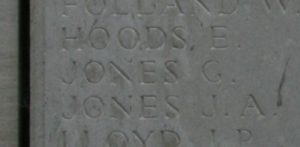
Herbert Jones, Private 1st Class, H80370, Royal Air Force. Herbert was born on 7 February 1885, the son of William and Elizabeth Jones, of 49, Mount Street, Welshpool. He worked as a postman prior to the war. Herbert enlisted into the Royal Flying Corps on 8 May 1917 and on 15 October 1917 married Rose Smith, of Llwynderw, Welshpool whilst home on leave. In March 1918 the Royal Flying Corps merged with the Royal Naval Air Service to form the Royal Air Force and Herbert transferred to this new branch of the Armed Forces. Herbert was attached to a Salvage Section at Aldershot and remained there for much of the war. After the Armistice he took ill, and died of influenza at Cambridge Military Hospital, Aldershot on 11 December 1918. The remains of the 33-year-old were conveyed home and he was buried with full military honours in Christ Church Churchyard, Welshpool three days later. His brother-in-law, William Longhurst, was killed in France in 1918.
Thomas Edward Painton Jones, Captain, London Regiment (City of London Rifles). Thomas was born at Tadley, Hampshire on 18 March 1877, the son of William Jones and Martha Elizabeth Jones (nee Painton). By 1891 he was lodging at Church Street, Oswestry and was a pupil at Oswestry High School. Upon leaving school he became a Tailor running his own business in partnership with James Niven at 18, Broad Street, Welshpool. He enlisted into the Montgomeryshire Yeomanry at Welshpool on 4 January 1900 and served with the 49th Company, Imperial Yeomanry in South Africa during the Boer War, remaining there after the cessation of hostilities in 1902 having gained the rank of Sergeant. Thomas married Emily Annie Cooper in South Africa on 15 November 1905. By now his business in Welshpool had gone into receivership. With the likelihood of war against Germany, Thomas embarked at Durban aboard the RMS Llandovery Castle and disembarked at London on 12 August 1914. Thomas then enlisted into the 6th Battalion, London Regiment, but with his previous military experience was soon commissioned as a Second Lieutenant in the battalion. The battalion was a Territorial Army unit and had mobilised for war at 57, Farringdon Road, E.C. in August as part of the 2nd London Brigade, 1st London Division. The battalion then moved to Bisley for training before being sent to Crowborough before joining the 4th London Brigade, 2nd London Division at Watford. On 18 March 1915 the battalion landed at Le Havre before moving to the Festubert sector and saw its first major actions soon after at the Battle of Aubers Ridge, and at the Battle of Festubert during May 1915. The formation was then renumbered to 140 Brigade, 47th (2nd London) Division. During September the Division took part in the Battle of Loos, and in the subsequent Action of the Hohenzollern Redoubt. The Division was stationed were north of Arras in the Souchez Sector when the Germans attacked Vimy Ridge the following Spring and saw heavy fighting before moving south to the Somme in August 1916 to join the great offensive there. Thomas’s battalion was billeted at Millencourt upon its arrival, remaining there until 21 August when it marched to Naours, then underwent a training scheme at Franvillers until 12 September, when the battalion marched to Black Wood, near Albert and took over bivouacs in the wood for the coming days. On the morning of 14 September, the men were ordered to prepare to move into the front line, before marching to Albert to deposit their kits. During the day the men marched through Caterpillar Valley towards Bazentin-le-Grand, where the battalion took over a section of assembly trenches named Elgin Alley and High Alley. On the following morning, 15 September 1916, the battalion was ordered forward into the front-line and at 08.20 launched an assault, in four waves, against the German lines near Flers, supported by tanks for the first time. Thomas was killed in action during terrible fighting that day which saw the 6th London’s alone suffer almost 400 casualties. The 39-year-old has no known grave and is commemorated on the Thiepval Memorial, France.
Thomas Leonard Jones, Private, 45739, South Wales Borderers. Thomas was the son of Samuel and Margaret Jones, of 12, Mount Street, Welshpool. Thomas took over the family grocers business following the death of his father. He married Elizabeth Charlotte Smith, of Hollybush, Welshpool on 8 August 1912 and following the outbreak of war the couple moved to Cwmbran. Thomas enlisted into the South Wales Borderers at Newport, Monmouthshire in September 1916 and was drafted to France in May 1917, joining the 2nd Battalion, South Wales Borderers. The battalion was at Arras attached to 87 Brigade, 29th Division and was a very experienced regular army unit, having seen action in China and Gallipoli early in the war. Thomas probably joined the battalion among a number of reinforcements following heavy losses during the Divisions actions at the Battle of the Scarpe, part of the Arras Offensive, where it had suffered heavy casualties at Monchy-le-Preux. The Division then moved further north to Ypres, initially to hold the line whilst other units had been withdrawn for specialist training, in readiness for the Third Battle of Ypres, which opened on 31 July 1917. The 29th Division went into reserve whilst the first attacks, the Battle of Pilckem Ridge, took place, then on the night of 14-15 August the 2nd SWB moved into the line facing Langemarck, ready to launch another offensive. On the following day the battalion reconnoitred the ground in front of them, and laid white tapes in No Man’s Land, to guide the attacking troops, and at dawn on 16 August 1917 the 2nd SWB launched an attack on Langemarck. The battalion successfully took its two objectives but had suffered 163 casualties. The Division then had another period out of the line to rest and refit before taking part in further fighting near Poelcapelle. Early in October 1917 the Division was relieved from the line at Ypres, and moved south to the Bellacourt area, to prepare to take part in the forthcoming Battle of Cambrai. The Division entrained for Péronne on 17 November, marching to a camp four miles out of the town at Haut Allaines, then by midnight on 18 November had reached Fins. On the following day the Division received its battle stores and detailed orders for the forthcoming battle, marching off via Gouzeaucourt to its assembly positions at Marcoing. The assault began at dawn on 20 November, but the Division suffered terrible casualties whilst attacking Masnières, on the Hindenburg Line. Thomas was wounded and taken prisoner by the Germans at sometime after this and was eventually interred at Cologne. He died in captivity, reportedly of his wounds, there on 30 April 1918. The 42-year-old is buried in Cologne Southern Cemetery, Germany.
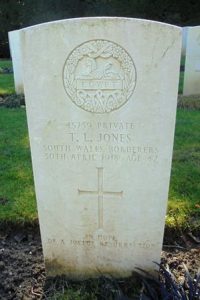
Thomas William Henry Jones, Private, 203066, Royal Welsh Fusiliers. Thomas, known as William, was the son of William and Annie Jones, of Welshpool. He worked as a labourer prior to the war. William enlisted into the Montgomeryshire Yeomanry at Welshpool on 12 March 1914 and attended the annual TA summer camp that year. On 5 August 1914 the Montgomeryshire Yeomanry was mobilised at Welshpool, as part of the South Wales Mounted Brigade, before moving via Hereford to Thetford, to join the 1st Mounted Division. Due to a large rush of volunteers, enough men had joined the regiment to form two more battalions, so William was posted to the newly formed 2/1st Battalion, Montgomeryshire Yeomanry. In July 1915 the battalion moved to Dorchester to join the 2/1st South Wales Mounted Brigade, then in September 1915 moved to Southwold where it remained until moving to Brentwood, Essex in July 1916. Thomas embarked for France on 17 December 1916 and joined the 5th Infantry Base Depot. He was then posted to the 1/4th Battalion, Royal Welsh Fusiliers, which was the Pioneer Battalion to the 47th (2nd London) Division. William joined the battalion at Ypres, where the Division was holding a section of the front line running south from Hill 60 to the Ypres-Comines Canal. William was granted two weeks leave the following year and returned to Britain, marrying his pregnant girlfriend Harriet Annie Roast, of 11, South Street, Brentwood, on 17 April 1917. He returned to France to re-join the 1/4th RWF but soon afterwards contracted trench fever and was sent back to England for treatment at Fairfield Court Hospital at Eastbourne. He then convalesced at Kempston Hospital before being drafted back out to France on 8 September 1917 and was posted to the 19th Battalion, Royal Welsh Fusiliers. The battalion was attached to 119 Brigade, 40th (Bantam) Division which was at the time of William’s arrival in the back areas near Arras, training in preparation for the forthcoming Battle of Cambrai. The 40th Division moved back into the battle area by 22 November and launched an attack on Bourlon Wood on the following morning of 23 November 1917. The attack was carried out by 119 Brigade, led by the 12th SWB and 19th RWF. The 17th Welsh was in support for the initial assault, but was soon ordered to advance, to support the two attacking battalions. Heavy fighting raged within the wood over the coming days, with the 18th Welsh also being thrown forwards into the fight, and the Division suffered terribly. William was killed in action during the initial assault into the wood on 23 November 1917. The 22-year-old has no known grave and is commemorated on the Cambrai Memorial, Louverval, France.
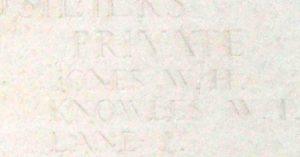
William Jones, Private, 10439, South Wales Borderers. William was the son of Anne Jones, of Lower Drifth, Churchstoke. His brother, Alfred, lived in Beguildy, where he worked as a farm hand. William was a regular soldier, and was serving with the 1st Battalion, South Wales Borderers at the outbreak of war. He disembarked in France on 9 November 1914 to join the battalion, which had been in France with the 1st Division since 13 August, and joined the battalion at Ypres, where it had been moved following the Battle of the Aisne. The task for the 1st Division at Ypres was a difficult one. The Germans plan, the Schlieffen Plan, involved a drive through Belgium to cut off the Channel ports, so the Allies had built a defensive line east of the city of Ypres, to stop this from happening. The division suffered heavy casualties at the fighting at Langemarck from 21-24 October, and the 1st SWB, together with the 2nd Welsh and 2nd Worcester’s, gained fame for holding the line at Gheluvelt following an overwhelming German attack on 31 October 1914. William joined the battalion at Outtersteene as part of a large number of drafts sent out to rebuild the battered battalion after its ordeals. He is officially recorded as being killed in action on 21 December 1914, although according to the battalion war diary, the battalion did not return to action until the following day, during an attack at Festubert. William has no known grave and is commemorated on the Le Touret Memorial, Richebourg-L’avoue, France. He is also commemorated on the Beguildy War Memorial.
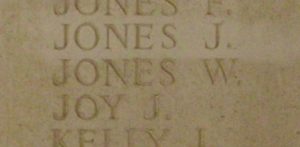
George Lambert, Private, 54414, Royal Welsh Fusiliers. George was the son of John and Margaret Lambert, of Powysland Nurseries, Welshpool. He worked as a gardener at Powis Castle prior to the war and married Melinda Griffin Champion, a domestic maid, at Oswestry in 1916. George had enlisted into the Montgomeryshire Yeomanry soon after the outbreak of war, but was not drafted to France until the summer of 1916, when he was among many men sent to rebuild the 10th Battalion, Royal Welsh Fusiliers. The battalion was attached to 76 Brigade, 3rd Division and had suffered over 200 casualties during several days of terrible fighting in Delville Wood in August, during an action which saw the award of two Victoria Crosses to men of the battalion. On 25 July the shattered battalion was relieved and moved into reserve and did not move back into the line until 17 August, when the battalion attacked Lonely Trench. On 23 August the Division moved out of the line to rest and moved to Noeux-les-Mines, near Loos. After a month there, the Division moved back into a rest area for further training before moving back south to the Somme and by 12 November took over trenches at Serre. On the following day, 13 November 1916, the Division launched an assault against the German positions at Serre. The 10th RWF reached Serre village, but the flanking battalions failed to keep up, and heavy losses were suffered, with almost 300 officers and men killed, wounded, or missing. George was among the men killed in action during the assault on Serre that day. The 30-year-old has no known grave and is commemorated on the Thiepval Memorial, France. His widow, Melinda, moved back to her native Gloucestershire, and named her home at Gloucester Road, Alveston ‘Welshpool’.
Hugh Lloyd, Private, 5777, Royal Welsh Fusiliers. Hugh was the illegitimate son of Ann Lloyd, of Bryn Pistyll, Garthbeibio. He worked as a farm labourer at Llanerfyl prior to enlisting into the Royal Welsh Fusiliers at Wrexham on 22 July 1898. Hugh served with the 1st Battalion, Royal Welsh Fusiliers during the Boer War of 1899-1901, and in 1903 was posted to the 2nd Battalion, Royal Welsh Fusiliers, embarking with the battalion for India the following year. He also saw service in Burma with the battalion, until it returned to England in 1909, and remained with the battalion over the coming years. Hugh embarked for France with the 2nd Battalion, Royal Welsh Fusiliers on 13 August 1914. The battalion was initially placed on Lines of Communication at Rouen, before joining 19 Brigade at Valenciennes, taking part in the retreat to the Marne with the BEF. Following the Battles of the Marne and the Aisne, 19 Brigade moved to Flanders with the BEF, and eventually took over the La Boutillerie sector after becoming attached to the 6th Division. On 19 October the 2nd RWF marched to Laventie, billeting for the night before moving forward of Fromelles, where the men began to dig in. The battalion then moved and dug in a new defensive position around La Cordonnerie Farm, where it was hit by a German attack on 24 October, beating it off with just seventeen casualties. Attacks continued over the coming days, with especially fierce fighting on 26 October, but the battalion stood firm. Hugh was killed during another German attack here on 30 October 1914. The 38-year-old has no known grave and is commemorated on the Ypres (Menin Gate) Memorial, Belgium.
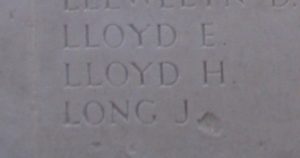
William Lloyd, Private, 291605, Royal Welsh Fusiliers. William was born in Guilsfield in 1888, the son of John Lloyd and Margaret Lloyd (nee Caswell). His father died in 1898 and in 1901 Margaret remarried Arthur William Lewis, of London House, Welshpool, who raised William and his siblings as his own. William enlisted into the 7th Battalion, Royal Welsh Fusiliers at Welshpool soon after the outbreak of war, and was posted to the 3/7th Battalion, Royal Welsh Fusiliers at Park Hall Camp, Oswestry for training. William was drafted to Egypt early in 1916, joining the 1/7th Battalion, Royal Welsh Fusiliers, which was attached to 158 Brigade, 53rd (Welsh) Division. The Division had been evacuated from Gallipoli in December 1915, moving to Egypt to join the EEF, and helped guard the Suez Canal before taking part in operations to drive the Turks out of the Sinai. The EEF then turned its attention onto driving the Turks out of Palestine, and on 26 March 1917 launched its first offensive against the coastal city of Gaza, which guarded the road to Jerusalem. Initial gains during the day were lost when the assaulting divisions lost touch with each other, and communication broke down when a thick fog cloaked the battlefield. William was killed in action during the assault that day. The 29-year-old has no known grave and is commemorated on the Jerusalem Memorial, Israel.
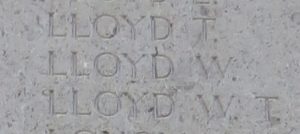
William Longhurst, Private, 55261, Royal Welsh Fusiliers. William was the son of George William Longhurst, of Llanymynech. He worked as a groom prior to gaining work for Mr. Gittins Grocers at Welshpool. William married Mary Harriet Jones, of 49, Mount Street, Welshpool on 9 July 1915. William had enlisted into the Montgomeryshire Yeomanry at Welshpool, but upon being drafted to France in the autumn of 1915 was posted to the 2nd Battalion, Royal Welsh Fusiliers. The battalion was by then at Loos attached to 19 Brigade, 2nd Division and took part in the Battle of Loos, and in the subsequent Action of the Hohenzollern Redoubt, before joining the newly arrived 33rd Division on 25 November 1915. The Division endured a hard time during its first few months in the line, holding such notorious sectors as Cambrin and Cuinchy, where underground warfare was prevalent. William was invalided home in March 1916, suffering from trench fever, and upon his recovery was sent back out to France in September 1916, joining the 13th Battalion, Royal Welsh Fusiliers. The battalion was by then at Ypres and was attached to 113 Brigade, 38th (Welsh) Division, which was holding the Canal Bank sector at Boesinghe. The infantry battalions of the Division then began carrying out the normal pattern of rotation in the trenches, four days in the front, four in support and four in reserve, whilst also working on trench improvement, digging new trenches, and carrying out regular patrols and trench raids. On 31 July 1917 the Division launched its famous assault on the Pilckem Ridge, capturing Iron Cross and reaching its objective of the Steenbeek, then played a supporting role in the Battle of Langemarck. The Division was transferred to the Sailly-sur-la-Lys sector in September and remained in the area over the winter before being moved to positions north of Albert, at Bouzincourt Ridge, at the end of March 1918, relieving the battered 2nd and 47th Divisions. On 22 April 1918 the 13th RWF took part in an assault against the German positions on Bouzincourt Ridge, in order to gain the high ground on the battlefield. William was killed in action by machine-gun fire during the assault, during a day in which the battalion suffered terrible losses. The 36-year-old is buried in Bouzincourt Ridge Cemetery, Albert, France. His brother-in-law, Herbert Jones, died of influenza just after the Armistice.
James Malins, Private, 9894, King’s Shropshire Light Infantry. James was born at Birkenhead in 1893, the son of James and Sarah Jane Malins. The family then moved to 4, Whittington’s Passage, Welshpool. James worked as a labourer prior to enlisting at Shrewsbury into the Montgomeryshire Yeomanry in 1907, as a 14-year-old, and became a Bugler, but soon joined the regular army, enlisting at Shrewsbury into the 1st Battalion, King’s Shropshire Light Infantry, which was at Tipperary. The battalion was attached to 16 Brigade, 6th Division and was recalled to England following the outbreak of war, before embarking for France and landed at St. Nazaire on 10 September 1914. The Division joined the hard-pressed BEF on the on the Aisne, before the whole army was moved north into Flanders. James was wounded soon after his arrival at the front with the 1st KSLI and evacuated back to Britain for treatment. It was not until the Spring of 1917 that he was fit enough to return to duty and was drafted back out to France, joining the 6th Battalion, King’s Shropshire Light Infantry, which was attached to 60 Brigade, 20th (Light) Division. The Division had been on the Somme in the summer of 1916 and remained in the area over the winter before taking part in the advance to the Hindenburg Line in March 1917. Later that year the Division fought at the Third Battle of Ypres, where it saw heavy fighting before moving south in November, to take part in the Battle of Cambrai. The Division remained in the area between Cambrai and St. Quentin over the winter of 1917-18, in terrible conditions. James took ill just in January 1918 and was evacuated to hospital at Rouen. He re-joined the 6th KSLI early in March 1918. At dawn on 21 March 1918 the Germans launched an overwhelming assault along a section of the Western Front running from Croisilles down to La Fère. The 6th KSLI was billeted at Cugny when the Germans attacked and at noon was ordered to man battle stations. During the afternoon the battalion advanced to the quarry at Bray St. Christophe before spreading out to man rear defensive positions. At dawn the following day the Germans attacked again, under the cover of a thick mist, and the 6th KSLI soon came under attack as the front line was smashed. Heavy fighting raged for days as the 20th Division was forced to slowly withdraw towards the Somme crossings. James was posted as missing during this withdrawal, at some time between 21 March and 1 April 1918. He was later deemed to have been officially killed in action on the latter date, 1 April 1918. The 25-year-old has no known grave and is commemorated on the Pozieres Memorial, France.
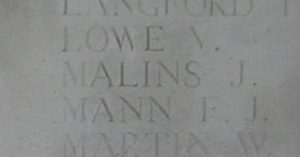
William Thomas Mercer, MBE, Lieutenant, Royal Army Service Corps. William was born in Bradford in 1868, the son of Samuel Mercer and Susannah Mercer (nee Clough). He had enlisted into the army as a young man and served in the Boer War in South Africa as a Sergeant Major with the 12th Lancers, seeing considerable action there. Upon his return he was appointed as Quartermaster to the Montgomeryshire Yeomanry, upon the retirement of Sergeant Major Jestice, and moved with his wife Mary Ann Mercer (nee Jones) and three children to Welshpool. The family them moved to Oswestry, where a fourth child was born in 1905, before returning to Welshpool and resided at Bodfach. On 5 August 1914 the Montgomeryshire Yeomanry was mobilised at Welshpool, as part of the South Wales Mounted Brigade, before moving via Hereford to Thetford, to join the 1st Mounted Division. On 4 March 1916 the 1st Mounted Division sailed for Egypt to join the EEF. Although by now over-age, William volunteered for overseas service and embarked with the Regiment, serving with the Yeomanry at Fayum, in Egypt, during the pursuit of the Senussi in the Libyan Desert, up to Baharia. When the Montgomeryshire Yeomanry merged with the Welsh Horse Yeomanry to form the 25th Battalion, Royal Welsh Fusiliers in March 1917, William left the regiment and became attached to the Navy and Army Canteens at Salonika, attached to the Army Service Corps. William became ill just before the Armistice and died in hospital in Salonika of sickness on 13 November 1918. The 51-year-old was posthumously awarded the MBE for his services during the war. He is buried in Mikra British Cemetery, Kalamaria, Greece.
Alfred Morris, Private, 9046, Royal Welsh Fusiliers. Alfred was born at Montgomery in 1886, the son of Richard Morris and Elizabeth Morris (nee Humphreys). By 1911 he was lodging at Plas Trehelig, Welshpool, where he worked as a gardener for Mrs White. He then left just prior to the war to work as a gardener at Milford Hall, Newtown and resided at Milford Hall Cottage. Alfred enlisted into the 3/7th Battalion, Royal Welsh Fusiliers at Welshpool soon after the outbreak of war but was discharged as medically unfit. He re-enlisted into the 4th (Reserve) Battalion, Royal Welsh Fusiliers at Wrexham on 30 March 1916 and was posted to Prees Heath Camp near Whitchurch for training. Alfred had only been at Prees Heath a matter of days when he was admitted into Prees Heath Military Hospital on 10 April, suffering from pneumonia. He appeared to be recovering, but on 19 April 1916 began suffering chest pains and died of a heart attack, induced by his pneumonia. The remains of the 29-year-old were brought home and he was buried in St. Mary’s Churchyard, Welshpool on 22 April.
James Morris, Private, 290998, Royal Welsh Fusiliers. James was the son of John and Margaret Morris, of Welshpool. He married Mary Elizabeth Pryce in 1896 and the couple set up home at 14, Bowling Green Lane, Welshpool. John worked as a stone quarry labourer prior to the war. He enlisted at Welshpool into the 2/7th Battalion, Royal Welsh Fusiliers on 8 March 1915 and was posted to the 1/7th Battalion, Royal Welsh Fusiliers, which was at Northampton attached to North Wales Brigade, Welsh Division. The Division moved to Bedford in May 1915, where the Division was numbered and the formation became 158 Brigade, 53rd (Welsh) Division. On 19 July 1915 the entire Division sailed from Devonport for Imbros and on 9 August 1915 landed at Suvla Bay. The infantry moved off the beaches across the Salt Lake, under shellfire, into the scrub covered Chocolate Hill, but due to a lack of maps and no knowledge of the terrain, many of the units became disorientated, and the situation became chaotic. After the fighting died down, the winter rolled in, and the men first had to endure torrential downpours, which flooded the trenches, before the snow hit, and many men began falling ill in the terrible conditions. The Division was eventually evacuated from Gallipoli in December 1915, moving to Egypt to join the EEF, and helped guard the Suez Canal before taking part in operations to drive the Turks out of the Sinai. The EEF then turned its attention onto driving the Turks out of Palestine, and on 26 March 1917 launched its first offensive against the coastal city of Gaza, which guarded the road to Jerusalem. Initial gains during the day were lost when the assaulting divisions lost touch with each other, and communication broke down when a thick fog cloaked the battlefield. James was killed in action during the assault that day. The 42-year-old is buried in Gaza War Cemetery.
Peter George Morris, MM, Corporal, 100779, Royal Army Medical Corps. Peter was the son of Peter and Elizabeth Morris, of Treflach, Oswestry. He moved to Cumberland Place, Welshpool some years prior top the war, where he worked as a blacksmith. Peter married Mary Hannah Sides at Welshpool Parish Church on 9 November 1912, and in October 1913 their son George was born. Sadly, his wife Mary died soon afterwards, on 21 October. Peter had served with the Montgomeryshire Yeomanry prior to the war, but on 7 August 1915 enlisted at Welshpool into the Royal Army Medical Corps and was sent to Woolwich for training. On 9 October 1916 Peter embarked at Southampton for France, initially joining the Base Depot before being posted to the 111th Field Ambulance, Royal Army Medical Corps, which was attached to the 16th (Irish) Division and joined the unit at Meteren on 16 October. Peter became ill just before Christmas 1916 and was hospitalised himself over Christmas before returning to duty. The 111th FA remained at Meteren until 19 June 1917 when it moved to Godewaersvelde and on 22 June set up at Peenhof Farm. Peter was awarded the Military Medal, for Bravery in the Field during this period. On 23 July the 111th FA marched to a new position at Winnezeele and set up again at Hilhoek and then at the Moated Farm in preparation for the forthcoming Passchendaele offensive. At the end of August, the 111th FA moved south before setting up at Hamelincourt, to the west of Croisilles. When the Battle of Cambrai opened on 20 November, the 111th FA moved forwards to St. Leger to begin taking in the wounded from the Croisilles sector. On 2 December the unit moved to Beaulencourt, and then onto Rocquigny before setting up at Hamel, near Tincourt. The unit then took over the Hospital at Péronne where it remained over the winter. At dawn on 21 March 1918 the Germans launched an overwhelming assault along a section of the Western Front running from Croisilles down to La Fère, and Péronne came under artillery fire. Peter was wounded by shrapnel to his right leg and arm and was evacuated to the 113th Field Ambulance before being transferred to No 2 Casualty Clearing Station, where his wounds were further treated before he was sent to No 3 Australian General Hospital in Abbeville. Peter sadly died of his wounds at Abbeville on 1 April 1918. The 31-year-old is buried in Abbeville Communal Cemetery Extension, France.
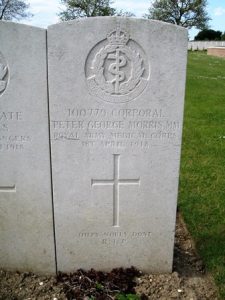
Richard Lewis Morris, Private, 33413, Border Regiment. Richard was the son of Morgan Morris and Mary Morris (nee Twist), of Trafalgar House, Welshpool. By 1911 he was lodging at 41, Bank Road, Bootle where he worked as a Grocer’s Assistant. Richard enlisted at Seaforth, Lancs into the 22nd Battalion, The King’s (Liverpool Regiment) soon after the outbreak of war, but upon being drafted to France in the summer of 1916 he was transferred to the 6th Battalion, Border Regiment, which was attached to the 33 Brigade, 11th Division. The Division, which had fought at Gallipoli, saw its first action in France at the Battle of Flers-Courcelette during the Somme Offensive before spending the winter on the Ancre. In June 1917 the Division took part in the Battle of Messines, and then fought at the Battle of Langemarck during the Third Battle of Ypres. At the end of September, the Division fought at the Battle of Polygon Wood, then saw further fighting at the Battle of Broodeseinde and the Battle of Poelcapelle. The Division didn’t see any more major fighting for some months after the Passchendaele Offensive had been closed, but in February 1918 the army was reorganised and the 6th Battalion, Border Regiment was disbanded. Richard was then posted to the 1st Battalion, Border Regiment, which was attached to 87 Brigade, 29th Division, which was in the Passchendaele sector. At the end of February, the battalion moved back to Poperinghe to carry out work on the Army Battle Zone, then by 9 March had moved back onto Passchendaele Ridge. To the south, the Germans had launched their great offensive of 21 March, before launching its second phase along the Lys Valley on 9 April. The Germans broke through the Allies lines that day, so the 29th Division was rushed to the Merville area to stem their advance, taking up positions along the Éstaires to Neuf Berquin Road. The Division was hit on the left flank on 11 April and the line appeared to be broken as men could be seen withdrawing across the open fields. The Germans hit the 1st Border’s position that afternoon and heavy fighting then ensued. Richard was killed in action two days later, during terrible fighting around Vieux-Berquin on 13 April 1918. The 37-year-old has no known grave and is commemorated on the Ploegsteert Memorial, Belgium.
Glendower George Ottley, MiD, Major, Royal Fusiliers. Glendower was born at Bombay on 20 January 1872, the son of Richard Ottley and Fanny Ottley (nee Proudfoot). He was educated in England before being commissioned as Second Lieutenant into the King’s Own Yorkshire Light Infantry in 1892. Glendower served in India, in the Tirah Campaign, and on the Punjab Frontier, before serving during the Boer War with the KOYLI. After returning from South Africa, he married Florence Marie Clarke on the Isle of Wight and the couple came to live at Welshpool. For almost a year following the outbreak of war, Glendower remained in Britain, but in October 1915 was sent out to France to take command of the 4th Battalion, Royal Welsh Fusiliers, following the promotion of Lieutenant Colonel Pereira. The battalion was at Mazingarbe, attached to the 47th (2nd London) Division when Glendower assumed command on 8 October. The 4th RWF was a Pioneer Battalion, which was employed by the 47th Division in carrying out manual labour work, such as digging trenches, constructing light railways and tramways, and in carrying material to the front-line battalions and had seen almost continuous service since arriving in France in November 1914. Glendower’s first action was to read to his new men several congratulatory letters from various commanders, including Archibald Montgomery and Sir Hubert Gough, regarding the battalion’s work. Colonel Pereira re-joined the 4th RWF the following month, and retook command of the battalion, so Glendower went on leave before transferring to the Royal Fusiliers. During the following summer he became attached to the 9th Battalion, East Surrey Regiment, which was attached to 72 Brigade, 24th Division. The battalion had moved to the Somme at the end of July 1916 following a long spell at Ypres and Glendower joined its ranks in August following heavy casualties suffered by the battalion during an assault south of Guillemont on 16 August. The battered battalion moved to Montauban to rest before moving to positions at Fricourt and Dernancourt over the coming days. By 31 August the battalion had moved into reserve positions at Montauban and on the following morning took over a section of front-line trenches in Delville Wood. On 3 September 1916 the 9th East Surreys attacked Hop and Ale Trenches, in conjunction with an assault on their right flank against Ginchy but was almost annihilated. Glendower had been killed in action during the assault that day. The 44-year-old has no known grave and is commemorated on the Thiepval Memorial, France. His daughter, and only child, Diana Sydney Biddlecombe (nee Ottley) died whilst serving with the WRNS in World War Two.
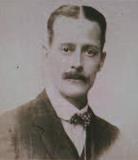
Sydney Owen, Private, 3248, Royal Welsh Fusiliers. Sydney was the son of Pryce Owen and Mary Jane Owen 9nee Rowlands), of 13, Whittington’s Passage, Welshpool. He worked as a farm servant at Penarth Farm, Newtown prior to the war. Sydney enlisted into the 7th Battalion, Royal Welsh Fusiliers at Newtown soon after the outbreak of war. The battalion was a Territorial unit, which mobilised for war at Newtown in August 1914, as part of North Wales Brigade, Welsh Division and moved to Conway until the end of the month, before moving to Northampton. In December the Division moved to Cambridge and then in May 1915 to Bedford, where the Division was numbered and the formation became 158 Brigade, 53rd (Welsh) Division. On 19 July 1915 the entire Division sailed from Devonport for Imbros and on 9 August 1915 landed at Suvla Bay. The infantry moved off the beaches across the Salt Lake, under shellfire, into the scrub covered Chocolate Hill, but due to a lack of maps and no knowledge of the terrain, many of the units became disorientated, and the situation became chaotic. After the fighting died down, the winter rolled in, and the men first had to endure torrential downpours, which flooded the trenches, before the snow hit, and many men began falling ill in the terrible conditions. Sydney took ill during these terrible conditions and died of exposure at Gallipoli on 28 November 1915. The 25-year-old is buried in Lala Baba Cemetery, Gallipoli.
Samuel Parry, Private, 290112, Royal Welsh Fusiliers. Samuel was born in Wrexham in 1883, the son of John and Ellen parry. By 1901 the family was residing at 18, Clifton Street, Welshpool. Samuel worked for the Welshpool Standard Granite Company prior to the war. He enlisted into the 7th Battalion, Royal Welsh Fusiliers at Welshpool on 9 May 1912, and attended the annual TA summer camp every year up until the outbreak of war. The battalion was a Territorial unit, which mobilised for war at Newtown in August 1914, as part of North Wales Brigade, Welsh Division and moved to Conway until the end of the month, before moving to Northampton. In December the Division moved to Cambridge and then in May 1915 to Bedford, where the Division was numbered and the formation became 158 Brigade, 53rd (Welsh) Division. On 19 July 1915 the entire Division sailed from Devonport for Imbros and on 9 August 1915 landed at Suvla Bay. The infantry moved off the beaches across the Salt Lake, under shellfire, into the scrub covered Chocolate Hill, but due to a lack of maps and no knowledge of the terrain, many of the units became disorientated, and the situation became chaotic. After the fighting died down, the winter rolled in, and the men first had to endure torrential downpours, which flooded the trenches, before the snow hit, and many men began falling ill in the terrible conditions. The Division was eventually evacuated from Gallipoli in December 1915, moving to Egypt to join the EEF, and helped guard the Suez Canal before taking part in operations to drive the Turks out of the Sinai. The EEF then turned its attention onto driving the Turks out of Palestine, and on 26 March 1917 launched its first offensive against the coastal city of Gaza, which guarded the road to Jerusalem. Initial gains during the day were lost when the assaulting divisions lost touch with each other, and communication broke down when a thick fog cloaked the battlefield. Samuel was wounded and taken prisoner by the Turks during the terrible fighting that day and was sent to a Turkish POW camp at Adana. He died there of fever whilst in captivity on 25 August 1917. The 33-year-old has no known grave and is commemorated on the Jerusalem Memorial, Israel.
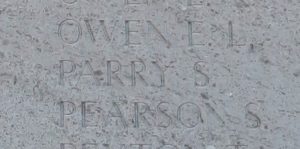
Thomas Sydney Pinder, Lance Corporal, PS/10092, Royal Fusiliers. Thomas was the son of Thomas and Sarah Jessie Pinder, of 10, Grosvenor Street, Newton Heath. He married Elsie Mary Turner at Manchester on 4 August 1915 and the couple moved to Havelock Terrace, Welshpool. Thomas enlisted at Welshpool into the army soon after the outbreak of war and early in 1916 was posted to the 8th Battalion, Royal Fusiliers. The battalion had been in France since May 1915, attached to 36 Brigade, 12th (Eastern) Division. The Division had taken part in the Battle of Loos, and the subsequent actions of the Hohenzollern Redoubt in September 1915 and had remained in the Vermelles sector over the winter. In May 1916 the Division was withdrawn from the Vermelles Sector and spent a short while behind the lines training before being transferred south to the Somme sector, reaching Vignacourt by 17 June where more training was carried out. The Division then took up positions east of Albert and on 2 July 1916, the second day of the Battle of the Somme, attacked Ovillers. The ensuing fighting began what was to be a prolonged period on the Somme for the Division, with further attacks on Ovillers and the Tara-Usna Line at Pozieres to follow over the coming weeks. The Division then held the line northwest of Pozieres, beside the Australians, while fighting raged for control of the Thiepval Ridge, before being relieved and moving to the Somme back areas to rest and rebuild. By 30 August the 8th Royal Fusiliers had moved back into the battle zone at Pommiers Redoubt before taking over a section of the front line at Flers. On 7 October 1916 the battalion took part in a general advance, in conjunction with the whole of the Fourth Army. Unfortunately, the Germans facing the battalion were in the process of being relieved, so were at double strength, with two infantry regiments in place and the Germans counter-attacked, causing huge losses to the battalion. Thomas was last seen in No Man’s Land when the German’s counter attacked. A patrol went out the following morning to try and find him, but he was not to be seen again. The 25-year-old has no known grave and is commemorated on the Thiepval Memorial, France.
William Charles Popple, Private, 290210, Royal Welsh Fusiliers. William was the son of Herbert George Popple and Agnes Maud Popple (nee Evans), of 17, Union Street, Welshpool. He worked as a labourer prior to the war. William and his brother John Herbert Popple enlisted into the 7th Battalion, Royal Welsh Fusiliers together at Welshpool on 22 May 1914 and attended the annual TA summer camp that year. The battalion was a Territorial unit, which mobilised for war at Newtown in August 1914, as part of North Wales Brigade, Welsh Division and moved to Conway until the end of the month, before moving to Northampton. In December the Division moved to Cambridge and then in May 1915 to Bedford, where the Division was numbered and the formation became 158 Brigade, 53rd (Welsh) Division. On 19 July 1915 the entire Division sailed from Devonport for Imbros and on 9 August 1915 landed at Suvla Bay. The infantry moved off the beaches across the Salt Lake, under shellfire, into the scrub covered Chocolate Hill, but due to a lack of maps and no knowledge of the terrain, many of the units became disorientated, and the situation became chaotic. After the fighting died down, the winter rolled in, and the men first had to endure torrential downpours, which flooded the trenches, before the snow hit, and many men began falling ill in the terrible conditions. The Division was eventually evacuated from Gallipoli in December 1915, moving to Egypt to join the EEF, and helped guard the Suez Canal before taking part in operations to drive the Turks out of the Sinai. The EEF then turned its attention onto driving the Turks out of Palestine, and on 26 March 1917 launched its first offensive against the coastal city of Gaza, which guarded the road to Jerusalem. Initial gains during the day were lost when the assaulting divisions lost touch with each other, and communication broke down when a thick fog cloaked the battlefield. William was killed in action during the terrible fighting that day. The 24-year-old is buried in Gaza War Cemetery. His brother survived the war and his future wife had lost her eldest brother, Edward Lancelot Vaughan, with the 7th RWF in Palestine later in 1917.
Walter James Potter, Private, 200569, King’s Shropshire Light Infantry. Walter was born in Limehouse, London in 1897, the son of James Potter and Sarah Jane Potter (nee Davies). His father was from Bridgnorth and his mother from Welshpool, so by 1901 the family was living back at 38, Mount Street, Welshpool. Walter moved to Hadley, Shropshire prior to the war, to work as a motor engineer, and whilst living there he joined the local TA battalion, the 4th Battalion, King’s Shropshire Light Infantry. The battalion mobilised for war at Shrewsbury on 4 August 1914 attached to the Welsh Division, then moved to Cardiff on garrison duties before being transferred to Sittingbourne where it joined the Middlesex Brigade, Home Counties Division. On 29 October 1914 the 4th KSLI embarked for the Far East and the battalion split between Singapore, the Andaman Isles and Hong Kong, for garrison duties. By 13 April 1917 the battalion had concentrated in Singapore and embarked for England, stopping in Colombo on 19 April and Cape Town on 30 May. A month later the battalion sailed from Cape Town and landed at Plymouth on 27 July 1917, re-embarking at Southampton before landing at Le Havre on 29 July 1917. Walter took ill soon after arriving in France and had a spell in hospital at Le Havre. On the following month the 4th KSLI moved to Maroeuil where the battalion joined 190 Brigade, 63rd (Royal Naval) Division. The battalion underwent an intensive training regime upon arriving at Maroeuil before the Division began moving north, reaching Wormhoudt by 7 October and by 25 October the Division had reached positions on the Canal Bank at Ypres, ready to join the great fight for Passchendaele Ridge. The men of the 4th KSLI spent the coming days preparing for the great push, drawing stores, bombs and bullets and spent the night of 28 October in positions on the Canal Bank, soaking wet and freezing, ready to advance to the front line. On the following day the battalion moved off via Irish Farm and took over positions at Albatross Ridge, suffering heavy casualties from shellfire as it advanced. Two Company’s were then detailed to fill a gap at Varlet Farm and one to the Canadian HQ at Kronprinz Farm. Walter was killed in action here during terrible conditions on 31 October 1917. The 21-year-old has no known grave and is commemorated on the Tyne Cot Memorial, Belgium.
Arthur Price, MM, Corporal, 25727, Royal Field Artillery. Arthur was the son of Charles and Mary Ann Price, of Brook House, Llangynllo. He married Mary Elizabeth Evans, of 4, Boot Street, Welshpool in about 1909, but lived and worked with his brother Albert as a coal hewer at Bargoed prior to the war. Mary joined him in Bargoed just before the war, but when he enlisted into the Royal Field Artillery, moved back to Welshpool with their children. Arthur landed in France with ‘X’ Battery, 2nd Trench Mortar Battery, Royal Field Artillery on 1 March 1915. The battery was equipped with the 1.5” mortar and was attached to the 7th Division. Arthur would have seen action during the Battles of Neuve Chapelle and Aubers Ridge soon after joining the battery and would have taken part in the Battle of Loos from 25 September onwards. Arthur was killed in action on 11 June 1916, just prior to the divisions move to take part in the Somme offensive. He was 29 years old and is commemorated on the Arras Memorial, France. He was awarded the Military Medal for bravery in the field, one of the earliest awards of the medal, for his actions prior to the Battle of the Somme.
Thomas Edward Pritchard, Private, 3507, Royal Welsh Fusiliers. Thomas was the son of Thomas and Ann Pritchard, of 2, Road Cottages, Llanmerewig. By 1911 his parents had moved to 6, Powell’s Row, Welshpool, while Thomas was living and working as a waggoner at Middle Sylfaen, Castle Caereinion. Thomas enlisted into the 7th Battalion, Royal Welsh Fusiliers at Welshpool soon after the outbreak of war. The battalion was a Territorial unit, which mobilised for war at Newtown in August 1914, as part of North Wales Brigade, Welsh Division and moved to Conway until the end of the month, before moving to Northampton. In December the Division moved to Cambridge and then in May 1915 to Bedford, where the Division was numbered and the formation became 158 Brigade, 53rd (Welsh) Division. On 19 July 1915 the entire Division sailed from Devonport for Imbros and on 9 August 1915 landed at Suvla Bay. The infantry moved off the beaches into the bush, but due to a lack of maps and no knowledge of the terrain, many of the units became disorientated, and the situation became chaotic. Heavy fighting raged over the coming days, before the Gallipoli campaign bogged down into a stalemate, and as winter neared sickness and disease was rife. Thomas was wounded towards the end of the campaign and died of his wounds at the 2nd Welsh Field Ambulance, Gallipoli on 29 November 1915, aged 26. He is buried in Lala Baba Cemetery, Gallipoli.
William Pritchard, Private, 1364, Welsh Guards. William was born in Barmouth in 1893, the son of John and Ann Pritchard. His father was a signalman for Cambrian Railways and by 1901 the family had moved to Tywyn. By 1911 the family had moved to Welshpool and William worked there as a railway porter, prior to enlisting into the Merionethshire Police in April 1914 and was posted to Barmouth. His father had by then become Station Master at Talsarnau. In May 1915 William enlisted into the newly formed Welsh Guards, which had been raised by Royal Warrant of 26 February 1915, at White City, and was posted to Prince of Wales Company. The Welsh Guards landed at Le Havre on 18 August 1915, becoming attached to 3rd Guards Brigade, Guards Division. The Division saw its first major action during the Battle of Loos, which began on 25 September 1915, and fought in the subsequent Action of Hohenzollern Redoubt. The Guards Division wintered at Ypres and on 27 July 1916 left Ypres for the Somme. The Guards attacked the village of Ginchy on 9 September, and its subsequent capture paved the way for an assault on Flers-Courcelette. The Welsh Guards moved into Trônes Wood on 14 September and saw for the first time the new super-weapon, the tank, which was about to make its debut on the battlefield. At 01.00 on 16 September 1916 the Welsh Guards received their orders to attack, and at midday the assault was launched, in terrible weather. William was killed in action during the heavy fighting that afternoon. The 24-year-old has no known grave and is commemorated on the Thiepval Memorial, France.
Albert William Proctor, Private, 1131, Royal Welsh Fusiliers. Albert was born in Llanidloes in 1897, the son of Albert William Proctor and Elizabeth Ellen Proctor (nee Pryse). The family moved to 6, Plas Arthur, Welshpool when Albert was young, as his father had gained the position of Station Master for the Cambrian Railway at the town. Albert enlisted into the 7th Battalion, Royal Welsh Fusiliers at Welshpool sometime prior to the war. The battalion was a Territorial unit, which mobilised for war at Newtown in August 1914, as part of North Wales Brigade, Welsh Division and moved to Conway until the end of the month, before moving to Northampton. In December the Division moved to Cambridge and then in May 1915 to Bedford, where the Division was numbered and the formation became 158 Brigade, 53rd (Welsh) Division. On 19 July 1915 the entire Division sailed from Devonport for Imbros and on 9 August 1915 landed at Suvla Bay. The infantry moved off the beaches across the Salt Lake, under shellfire, into the scrub covered Chocolate Hill, but due to a lack of maps and no knowledge of the terrain, many of the units became disorientated, and the situation became chaotic. Albert was killed in action on the following day, 10 August 1915. The 18-year-old has no known grave and is commemorated on the Helles Memorial, Gallipoli. His future brother-in-law Fred Davies, the husband to be of one of his younger sisters, Violet Mary Proctor, was killed during the Birmingham Blitz in 1941.
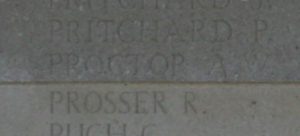
George Henry Pryce, Private, 355463, Royal Welsh Fusiliers. George was the son of Richard and Ann Pryce, of The Raven Inn, Welshpool. Following the death of his father in 1912, George ran the Raven with his mother. He enlisted at Welshpool into the Montgomeryshire Yeomanry on 24 November 1915 and was initially placed on the Army Reserve. George was mobilised on 22 January 1916 and posted to the 3/1st Battalion, Montgomeryshire Yeomanry which was at Park Hall Camp, Oswestry. After completing his basic training, George entrained for Southampton where he embarked for France on 20 December 1916. He then entrained for Marseilles, where he was among some 2,400 troops who boarded the troopship SS Ivernia. After loading her passengers, Ivernia left Marseilles, headed for Alexandria. At around 10.12 on 1 January 1917, the Ivernia was some 58-miles south of Cape Matapan, in the Kythira Strait when she was torpedoed by the lurking German submarine UB-47 and sank with the loss of 36 crew members and 84 troops. Her Captain Turner had been in command of the Lusitania when she was sunk in 1915. George was 21 years old when he lost his life in the sinking of the Ivernia that day. He has no known grave so is commemorated on the Mikra Memorial, Greece.
Lawrence Pugh, Private, 56222, Royal Welsh Fusiliers. Lawrence was born in Wrexham on 12 October 1897, the illegitimate son of Elizabeth Pugh and Richard Evans. He was initially raised in a children’s industrial school at Offerton, Stockport, before going to live at Welshpool with his grandparents, Richard and Elizabeth Pugh, at the Cock Hotel. Lawrence enlisted into the Montgomeryshire Yeomanry in the autumn of 1915 and was initially posted to the 3/1st Battalion, Montgomeryshire Yeomanry at Park Hall Camp, Oswestry for training. Upon being drafted to France in the winter of 1916-17 he was posted to the 1st Battalion, South Wales Borderers, which was on the Somme attached to 3 Brigade, 1st Division. Lawrence was not in France long when he suffered frostbite to his feet, due to the terribly cold winter, and was invalided home. He soon recovered and was posted back out to France, joining the 2nd Battalion, Royal Welsh Fusiliers, which was in the Arras sector, attached to 19 Brigade, 33rd Division. The Division had moved there from the Somme by 13 April, taking over a section of front line facing the Hindenburg Line. The infantry battalions of the division then began the usual routines of rotating between the front-line, support and reserve trenches and the 2nd RWF took over a position known as Tunnel Trench. On 23 April the 2nd RWF took part in a costly assault on the Hindenburg Line, suffering heavy casualties. The battered battalion then moved to a rest camp at Basseux to rebuild, and by 15 May moved back into the line in the Croisilles Sector. The Division then carried out several assaults against the Hindenburg Line, but could not breach it, so on 27 May 1917 a large-scale assault was carried out again, with the 2nd RWF in the thick of the action. Lawrence was posted as missing in action during the terrible fighting that day. No trace of the 19-year-old was ever seen again, so he was later officially recognised as having been killed in action that day, 27 May 1917. He has no known grave and is commemorated on the Arras Memorial, France. His uncle, Arthur Joseph Hamer, was also killed during the war.
William David Purcell, Private, 7187, Royal Welsh Fusiliers. William was the son of John and Harriet Purcell, of Glanlledan Cottage, Welshpool. He had served in the army for several years as a young man, before leaving the forces and found work as a postman at Welshpool prior to the war. William married Matilda Thomas in 1912 and the couple set up home at 21, Raven Street, Welshpool. As an army reservist, William was recalled to the colours following the outbreak of war and joined the 1st Battalion, Royal Welsh Fusiliers. He embarked for France with the battalion at Southampton aboard the SS Winifredian on 4 October 1914 and disembarked at Zeebrugge on 7 October. The 1st RWF was attached to 22 Brigade, 7th Division, and had gone to Zeebrugge to defend the port, but it was already in the process of falling to the Germans, so the 7th Division moved out of the city, marching via Bruges to Ostend, where the Division then entrained for Ghent. The Division then marched to Meirelbeke, and dug in defensive positions, in support of the French and Belgians. It soon became apparent that the Germans had broken through the Belgian lines, so on 11 October the 7th Division received orders to withdraw, reaching Hansbeke by the following day, and over the coming days continued to withdraw, marching through Thielt to Roulers, and by 14 October reached Ypres, becoming the first British Division to hold the city. The remainder of the BEF moved to Ypres from the Marne soon afterwards, in time to take part in the desperate defence of Ypres, when the Germans began attacking the city on 19 October. The battalion wintered in Flanders, then on 10 March 1915 took part in the costly Battle of Neuve Chapelle. William was wounded during a routine spell in the trenches on 5 April and was evacuated to the 7th Casualty Clearing Station at Merville, where he died of his wounds on 9 April 1915. The 32-year-old is buried in Merville Communal Cemetery, France.
William Martin Quinn, Private, 8403, South Wales Borderers. William was the son of John and Elizabeth Quinn, of 10, Brook Street, Welshpool. He was a long serving soldier and when war erupted was serving with the 1st Battalion, South Wales Borderers. On 4 August 1914 the battalion was at Bordon attached to 3 Brigade, 1st Division, which soon mobilised for war. The 1st SWB embarked together with the Gloster’s aboard the SS Gloucester Castle at Southampton and landed at Le Havre on 13 August to join the BEF, proceeding to the Belgian frontier near Lechelle where the Division assembled. On 20 August the Division moved to Beaurepaire-sur-Sambre before taking over trenches at Maubeuge. On 23 August the Germans attacked the nearby city of Mons with overwhelming numbers and the BEF was forced to withdraw. The ensuing withdrawal south to the River Marne was known as the Retreat from Mons and took place over several weeks of hard marching, with the Germans hot on the tails of the tired troops. The Germans were stopped by a combined Anglo-French action at the Marne, before the Allies drove the Germans back northwards across the River Aisne, where they took up defensive positions on the Chemins-des-Dames ridge. Another large battle ensued before the BEF was transferred north to Flanders, taking up defensive position’s northeast of Ypres around Langemarck and to the south facing La Bassée. The 1st Division was among the units sent to Ypres and on 21 October 1914 launched a counterattack at Langemarck towards Poelcapelle. The Germans counter-attacked themselves in masses, but the well-trained marksmen of the BEF mowed them down in great numbers in a futile attack known by the Germans as the ‘Der Kindermord bei Ypern’ (The Massacre of the Innocents at Ypres). Almost all the available records show that William was killed in action during this action at Langemarck on 21 October 1914, however the CWGC states that he was killed on 31 October 1914, when the 1st SWB took part in the gallant but suicidal stand by 3 Brigade at Gheluvelt, when the German drive on Ypres was halted. The 38-year-old has no known grave and is commemorated on the Ypres (Menin Gate) Memorial, Belgium.
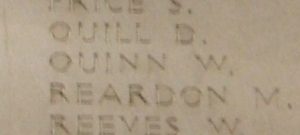
Alfred Hope Reed, Leading Seaman, 9202A, Royal Naval Reserve. Alfred was born at Stokesay on 3 September 1868, the son of James Thomas Reed and Mary Drinkwater Reed (nee Leech). Upon the death of his father, his mother and some of his younger siblings moved to 15, Berriew Street, Welshpool. Alfred enlisted into the Royal Navy on 3 September 1886 and signed up for ten years’ service. Over the coming years he served on a wide number of ships, including dreadnaughts and destroyers, before leaving the Royal Navy on 8 July 1907 and joining the Royal Naval Reserve at Devonport. Following the outbreak of war Alfred was mobilised with the Royal Naval Reserve and was posted aboard the cargo ship SS Sagamore. On 27 February 1917 Sagamore left Boston for Liverpool, loaded with a general cargo. On 3 March 1917 she was off Fastnet in the Western Approaches when the German U-boat U-49 fired a torpedo at her which struck the defenceless ship on her port side. The ship sunk slowly, allowing all her crew to get into her lifeboats, but overnight a gale separated the three boats, and two of them were never seen again. Alfred was lost during that night. The 46-year-old has no known grave and is commemorated on the Chatham Naval Memorial, Kent.
Andrew Gordon Reed, Lieutenant, Royal Welsh Fusiliers. Andrew was the son of Reverend Samuel and Bessie Reed and of Elizabeth Reed (nee Peate), of Llangyniew. Educated at Llandovery College from 1899 to 1901, Andrew was known as a strong rugby forward, and played for the school First XV. After qualifying as a Solicitor, he resided at Swan Lodge, Leighton, and was a partner in the firm of Messrs. Howell, Yearley and Reed, Welshpool. Andrew married Miss Marjorie Alston, daughter of G.G. Alston of Horringer, Bury St. Edmonds, Sussex, on 22 June 1915. He was commissioned into the 7th Battalion Royal Welsh Fusiliers on 4 May 1908, and by 10 March 1914 had been promoted to Lieutenant. The battalion was a Territorial unit, which mobilised for war at Newtown in August 1914, as part of North Wales Brigade, Welsh Division and moved to Conway until the end of the month, before moving to Northampton. In December the Division moved to Cambridge and then in May 1915 to Bedford, where the Division was numbered and the formation became 158 Brigade, 53rd (Welsh) Division. On 19 July 1915 the entire Division sailed from Devonport for Imbros and on 9 August 1915 landed at Suvla Bay. The infantry moved off the beaches into the bush, but due to a lack of maps and no knowledge of the terrain, many of the units became disorientated, and the situation became chaotic. On the following day, the 7th RWF crossed the Salt Lake, before attacking Scimitar Hill. Andrew was killed in action during the fighting which followed that day, on 10 August 1915. The 29-year-old has no known grave and is commemorated on the Helles Memorial, Gallipoli.
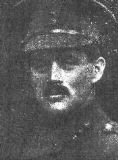
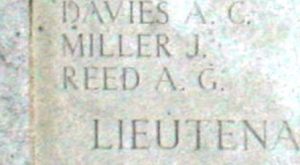
Graham Reese, Private, 13286, King’s Own (Royal Lancaster Regiment). Graham was born at the Nursery Cottage, Powis Castle, the son of George and Emma Reese. The family later ran the Dragon Inn at Welshpool before his parents retired to Mount Street, Welshpool. Graham left home as a young man to train in the grocery business at Oswestry, before becoming a grocer’s assistant for Messrs Seymour Mead at Lytham, lodging at 10, Westby Street, Lytham, Lancashire. He enlisted at Lytham into the 6th Battalion, King’s Own (Royal Lancaster Regiment) soon after the outbreak of war. The battalion assembled at Lancaster before moving to Tidworth to join 38 Brigade, 13th (Western) Division, then in February 1915 the Division moved to Aldershot to complete its training. Graham married Eliza Griffiths, a domestic maid from Liverpool, at Lytham early in 1915 whilst home at Lytham on leave. On 13 July 1915 he embarked with the Division for Gallipoli and on 6 July the Division landed at Cape Helles, relieving the 29th Division. The Division then left and returned to Mudros at the end of the month, before the entire Division landed at ANZAC Cove from 3 August 1915 to fight alongside the Anzacs during their great offensives at Sari Bair, Russell’s Top, and Hill 60, which were planned as diversionary attacks for further British landings at Suvla. When the Suvla attacks stalled, the 13th Division was moved from Anzac back to Suvla, but by now the Gallipoli campaign had bogged down and the harsh winter was setting in. Graham took ill during the terrible conditions which hit the peninsula and died of exposure on 28 November 1915. The 30-year-old has no known grave and is commemorated on the Helles Memorial, Gallipoli.
John Rimmer, Private, 419553, Labour Corps. John was the son of John and Jane Rimmer, of Rose Cottage, Worthen. He was working as a waggoner at The Moat Farm, Welshpool by 1911 and married Mary Tong at Welshpool in 1913. He then became a Policeman at Southport. John enlisted into the 15th (Reserve) Battalion, Lancashire Fusiliers at Southport on 21 April 1915 and after completing his training embarked at Devonport for Egypt on 4 April 1916 aboard HT Aragon, disembarking at Suez on 21 April. John was then posted to the 1/7th Battalion, Lancashire Fusiliers, which was attached to 12 Brigade, 42nd (East Lancs) Division. The Division had been evacuated from Gallipoli to Mudros in December 1915 before being sent to Egypt to help guard the Suez Canal. In February 1917 the Division was transferred to France, landing at Marseilles on 27 February, taking over the line near Épehy then Havrincourt. John was shot in the face on 15 April 1917 and was evacuated to hospital at Etretat, before being sent back to Britain aboard the Hospital Ship Londonderry. After recovering he embarked for France again on 10 September 1917 and upon joining the Infantry Base Depot at Étaples was posted to the 2nd Battalion, Lancashire Fusiliers. He was soon deemed as being unfit for front-line duties and was transferred to the 136th Labour Company, Labour Corps. He remained in France until going home on leave in September 1918 and was then posted to the 532nd Agricultural Company at Wrexham. John was discharged from the army after the Armistice and returned home to Welshpool. His health had sadly been ruined by his wounds, and by the time of his discharge he had lost his sight in one eye. John died as a result of his wounds at Welshpool on 14 November 1919. The 27-year-old was buried in Christ Church Churchyard, Welshpool. His name is a recent addition to the Welshpool war memorial.
Robert Charles Roberts, Corporal, SD/343, Royal Sussex Regiment. Robert was the son of Evan Roberts and Jane Roberts, of Park Cottage, Welshpool. His father died when he was young and his mother married Evan Ellis, of 24, Berriew Road, Welshpool. Robert left home as a young man and went into service for Mr. G. D. Harrison, of Fronllwyd, Welshpool. He then went into service as a groom for the Earl of Cawdor before becoming a groom and chauffeur at a large estate in Sussex. Robert enlisted into the South Down Battalion, Royal Sussex Regiment at Eastbourne on 7 September 1914. The battalion was raised at Bexhill where it remained until moving to Maidstone in July 1915, then moved to Aldershot before joining 116 Brigade, 39th Division at Witley. The Division embarked for France in March 1916, landing at Le Havre, before moving to the Fleurbaix sector for trench initiation and training alongside the 8th Division. The Division remained in this sector over the coming months, enjoying relative peace, but on 30 June 1916 it took part in a very costly attack in the area of Richebourg l’Avoue, where the 12th and 13th Sussex suffered terrible casualties. The 11th Sussex then took part in a successful trench raid on the night of 23-24 July before the entire 39th Division was relieved and transferred south to the Somme, to join the great offensive there. The Division reached Mailly Wood by 28 August, where the men prepared to join the fight and on the night of 2 September moved into the line at Beaumont Hamel. At 05.10 on the following morning, 3 September 1916, the Divisional artillery opened fire upon the German lines and the attacking troops crossed No Man’s Land, entering the German front-line trenches at the Schwaben Redoubt. The Germans fought desperately, and the Division suffered terrible casualties during the assault, with the 11th Sussex along losing 300 men. Robert was posted as missing during the charge that day. No trace of the 33-year-old was ever found, so he was later officially listed as being killed in action on that date. Robert has no known grave, so is commemorated on the Thiepval Memorial, France.
Wallace Llewellyn Roberts, DCM, MSM, Company Sergeant Major, 200283, Royal Welsh Fusiliers. Wallace was born in 1895, the son of Edward William Roberts and Rachel Roberts, of 32, Park Street, Denbigh. He came to live at Gungrog Road, Welshpool before the war where he worked as a fitter and engineer at the Welshpool Gas Works. Wallace was a member of the 4th Battalion, Royal Welsh Fusiliers, which was the Denbighshire Territorial Army battalion, and was mobilised at Wrexham on 4 August 1914 as part of North Wales Brigade, Welsh Division. The battalion moved to Conway until the end of August and then moved to Northampton but was removed from the Welsh Division and sent to France, landing at Le Havre on 6 November 1914. The battalion initially joined 3 Brigade, 1st Division at Bailleul and saw heavy fighting with the Division during the Battle of Aubers Ridge, before being transferred as the Pioneer Battalion to the 47th (2nd London) Division. The Division fought at the Battle of Loos, and subsequent Action of Hohenzollern Redoubt later that year. The Division was north of Arras when the Germans attacked Vimy Ridge in June 1916, then moved south to the Somme. The Division then took part in the Battle of Flers-Courcelette, which saw the first use of tanks on the battlefield, before seeing further fighting during the Battle of Le Transloy, where the Division captured Eaucourt l’Abbe, before taking part in the attacks on the Butte de Warlencourt. The Division remained in the Somme sector over the cold winter of 1916-17 and Wallace was invalided back to Britain after suffering frostbite. On 4 September 1917 he married Edith Griffiths, of Severn Cottage, Welshpool, before returning to France and re-joining the 4th RWF, which was by then at Arras, having moved there with the 47th Division at the end of September. The Division then took part in the Battle of Cambrai in November, remaining in the same area after the fighting had ceased. It was hit hard during the German Spring offensive, which was launched on 21 March 1918 and during the fighting withdrawal which ensued, Wallace was wounded. He returned to Ipswich Hospital for treatment and enjoyed some leave at home at Welshpool with his wife before returning to France, where he was posted to the 17th Battalion, Royal Welsh Fusiliers, which was holding the Bouzincourt Ridge sector on the Somme, attached to 115 Brigade, 38th (Welsh) Division. Wallace was awarded the Meritorious Service Medal in June 1918, for his continued good work. He was later awarded the Distinguished Conduct Medal: ‘For conspicuous gallantry and devotion to duty. During a retirement he steadied his men with indomitable energy and courage, at the same time carrying on his back a wounded officer. He continued carrying the latter and exhorting his men for fully half a mile under very intense machine-gun fire until the officer was again shot, this time through the head.’ (London Gazette 3.9.18). Wallace survived the war, taking part in the great advance to victory in which the 38th (Welsh) Division advanced from the Ancre Valley all the way across the old Somme battlefields and over Hindenburg Line to end the war having advanced through the massive Forest of Mormal, and returned home to Welshpool after his discharge, after having also been Mentioned in Despatches. His health had been badly affected by his service, however, having suffered frostbite and wounds, he also contracted liver disease, of which he died on 19 January 1922. The 27-year-old was buried in the Croft Cemetery, Welshpool. Wallace is not commemorated as a casualty of war by the CWGC.
Francis Joseph Rogers, Private, 109118, Sherwood Foresters (Notts and Derby Regiment). Francis was born in Welshpool on 12 May 1899, the son of Stephen Rogers and Sara Rogers (nee Kane). The family later resided at Bryn Castell, Oswestry, while Francis left home as a young man to be educated at St. Winifred’s Catholic College at Cheadle. By 1911 he was working as a Bank Assistant for Lloyds Bank and was residing at The Laurels, Ironbridge. Francis enlisted into the Army at Ironbridge on 2 March 1917 and was posted to the 71st Training Reserve Battalion at Ripon. On 20 March 1918 he was drafted to France and was posted to the 1st Battalion, Sherwood Foresters, which was attached to 24 Brigade, 8th Division. He joined the battalion on the Somme, where the 8th Division had been moved following the German offensive of 21 March 1918. The Division reached the Somme by 23 March and plugged a gap in the line along the River Somme, whilst other battered units withdrew under heavy pressure. The Division then came under attack itself and saw heavy fighting during the Actions at the Somme Crossings, and in the subsequent withdrawal took part in the Battle of Rosieres, and the Actions of Villers-Bretonneux, before being withdrawn from the line to rest. By 4 May the Division had moved south to the quieter Aisne sector to rest and rebuild, and the 1st Sherwood Foresters took over billets in Chéry-Chartreuve. Within days the Division had moved east of Fismes and took over a section of the Aisne sector, facing the Chemin-des-Dames ridge. On 27 May 1918 the Germans launched their third, and last, offensive of 1918 along the Aisne sector and the unfortunate 8th Division was caught in the centre of the terrible fighting which ensued. Francis was killed in action during that initial day. The 19-year-old has no known grave and is commemorated on the Soissons Memorial, France.
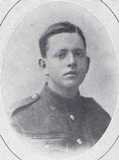
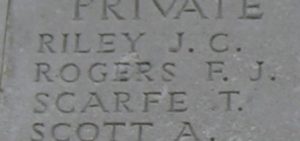
Frederick Rowlands, Sergeant, 23396, Welsh Regiment. Frederick was the son of Joseph and Mary Ann Rowlands, of Sun View, Welshpool. He had moved to the South Wales valleys some years prior to the war to gain work and married Mary Elizabeth Matthews at Pontycymmer in 1913. The daughter had one child, a daughter Gladys, born the following year. Frederick enlisted into the 16th Battalion, Welsh Regiment at Porthcawl early in 1915. The battalion had been raised at Cardiff in November 1914 by the Lord Mayor and Corporation and formed at Porthcawl before moving to Colwyn Bay to join 130 Brigade, 43rd (Welsh) Division. On 29 April 1915 the formation became renumbered to 115 Brigade, 38th (Welsh) Division and in August 1915 moved to Winchester for final training. The Division embarked for France in December 1915, landing at Le Havre, before proceeding to the Nursery Sector at Fleurbaix for trench initiation alongside the Guards Division. The Division then held a sector of the line near Cuinchy before marching south to the Somme sector in June 1916 to take part in the assault on Mametz Wood. The first attack on the wood was launched on a two-battalion front on 7 July, with the 16th Welsh and 11th Battalion, South Wales Borderers, of 115 Brigade. The 16th Welsh made the initial assault at 08.00 but was mown down, suffering such terrible casualties that it was later said that the 16th Welsh died at Mametz Wood. Frederick had been killed in action that day during that initial assault. The 27-year-old is buried in Flatiron Copse Cemetery, Mametz, France.
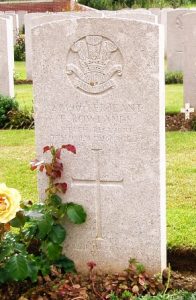
Albert H. Rudge. Albert’s name is an addition to the Welshpool war memorial. The only man of that name with any links to Welshpool was an Albert Henry Rudge, a publican from Chirk, who married Kate Collins at Welshpool on 19 February 1908. Albert appears to have survived the war and died at Wrexham in 1953. No man of that name was killed during the Great War, so is this another error on the memorial?

David Charles Sapple, Private, 1140, Royal Welsh Fusiliers. David was the son of Richard James Sapple and Mary Jane Sapple (nee Williams), of 1, Chapel Street, Welshpool. He enlisted at Welshpool into the 7th Battalion, Royal Welsh Fusiliers. The battalion was a Territorial unit, which mobilised for war at Newtown in August 1914, as part of North Wales Brigade, Welsh Division and moved to Conway until the end of the month, before moving to Northampton. In December the Division moved to Cambridge and then in May 1915 to Bedford, where the Division was numbered and the formation became 158 Brigade, 53rd (Welsh) Division. On 19 July 1915 the entire Division sailed from Devonport for Imbros and on 9 August 1915 landed at Suvla Bay. The infantry moved off the beaches across the Salt Lake, under shellfire, into the scrub covered Chocolate Hill, but due to a lack of maps and no knowledge of the terrain, many of the units became disorientated, and the situation became chaotic. David was killed in action on the following day, 10 August 1915. The 17-year-old has no known grave and is commemorated on the Helles Memorial, Gallipoli.
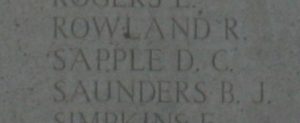
Richard Ernest Sheriff, Private, 58321, Royal Welsh Fusiliers. Richard was the son of Thomas Sheriff and Mary Ellen Sheriff (nee Smith), of Brewery Yard, Welshpool. He enlisted at Welshpool into the army and was posted to a Training Reserve Battalion. Richard embarked for France in the Spring of 1918, initially destined to join a battalion of the South Wales Borderers, but was instead posted to the 16th Battalion, Royal Welsh Fusiliers, which was on the Somme attached to 113 Brigade, 38th (Welsh) Division. The Division had moved to the Somme from the Sailly-sur-la-Lys sector at the end of March 1918 and moved to positions north of Albert, at Bouzincourt Ridge, relieving the battered 2nd and 47th Divisions. It held this sector, carrying out minor operations and trench raids, over the coming months whilst also carrying out several large-scale assaults in order to gain better positions. Richard was wounded at Bouzincourt Ridge, during a routine spell in the line for the 16th RWF in the second week of June and was evacuated to hospital at Rouen for treatment. He died of wounds at Rouen on 20 June 1918. The 18-year-old is buried in St. Sever Cemetery Extension, Rouen, France.
Richard Smith, Gunner, 277657, Royal Field Artillery. Richard was the son of Richard and Margaret Smith, of 29, Union Street, Welshpool. He enlisted into the army after the Armistice and was posted to Mesopotamia to join the 13th Brigade Ammunition Column, Royal Field Artillery. Richard died in Basra on 11 June 1920, probably as a result of the Iraqi Revolution. The 17-year-old is buried in Tehran War Cemetery, in modern day Iran. His name is a recent addition to the Welshpool war memorial.
Lizzie Dora Stephens, Worker, 20110, Queen Mary’s Army Auxiliary Corps. Lizzie was born in Welshpool in 1895, the daughter of John and Margaret Stephens. The family was residing at Nantmel, Radnorshire by 1911, before moving again to 14, Edward’s Terrace, Pentwyn, Treharris. Lizzie enlisted into the Queen Mary’s Army Auxiliary Corps following its formation in 1917 and was posted to Aldershot. The corps was established to free up men from administrative tasks for service at the front and was divided into four sections including cookery, mechanical and clerical, whilst nursing services were administered separately. Lizzie was granted the rank of worker, so would have been employed in helping services to run at the busy army camp at Aldershot. Lizzie took ill during April 1918 and was taken to the Military Hospital at Aldershot, where she died on 24 April 1918. The 23-year-old is buried in Aldershot Military Cemetery, Hampshire. Her name is a recent addition to the war memorial at Welshpool.
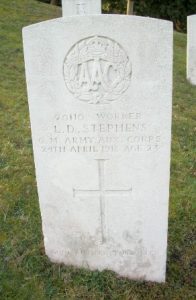
Henry Edward Stokes, Gunner, 69433, Royal Garrison Artillery. Henry was born at Welshampton in 1889, the son of Edward Stokes and Mary Stokes (nee Howells). He went to live with his uncle, Samuel Croxton, at 2, Hawthorn Cottage, Llandysilio prior to the war and after gaining a position as a relayer for the Cambrian Railways at Welshpool. He was also a member of the Welshpool branch of the St. John’s Ambulance Brigade. Henry enlisted into the Royal Garrison Artillery at Welshpool and after completing his training was posted to France, joining the 122nd Heavy Battery, Royal Garrison Artillery. The battery had been in France since 8 March 1915 and was equipped with 60 pounder guns. The Battery had seen extensive service in the Ypres Salient before being transferred south in order to support the Somme offensive in the summer of 1916. On 23 November 1916 Henry was in a dugout when it suffered a direct hit from a German shell, killing him instantly. The 27-year-old is buried in Pozieres British Cemetery, Ovillers-La Boiselle, France.
Arthur Taylor. Arthur cannot presently be identified.
Edward Thomas, Private, 292999, Cheshire Regiment. Edward was the son of William and Elizabeth Thomas, of 47, Lledan Crescent, Welshpool. Edward was already serving with the 7th Battalion, Royal Welsh Fusiliers when war erupted. The battalion was a Territorial unit, which mobilised for war at Newtown in August 1914, as part of North Wales Brigade, Welsh Division and moved to Conway until the end of the month, before moving to Northampton. In December the Division moved to Cambridge and then in May 1915 to Bedford, where the Division was numbered and the formation became 158 Brigade, 53rd (Welsh) Division. Edward did not embark for Gallipoli with the battalion but was instead posted to the 3/7th Battalion, Royal Welsh Fusiliers at Park Hall Camp, Oswestry, due to ill health at the time. He was eventually drafted to France in September 1917 and posted to the 16th Battalion, Cheshire Regiment, which was attached to 105 Brigade, 35th Division. He joined the battalion whilst it was in the St. Emilie sector, near Guillemont Farm, just prior to the Division being relieved and entraining at Péronne for Arras on 3 October. The Division then entrained for the Ypres Salient, reaching Cassel by 13 October and over the coming days marched towards their new sector at the Houthulst Forest, in the north of the Ypres Salient. On 19 October the 16th Cheshire’s took over a section of front line to the south of the forest, then at dawn on 22 October 1917 launched an attack behind a rolling artillery barrage upon the German positions around Marechal Farm facing them. Edward was posted as missing in action during the fighting which ensued. The 21-year-old was later deemed to have been killed in action on that date. He has no known grave and is commemorated on the Tyne Cot Memorial, France. One of his brothers, John, died at Salonika in 1916, whilst their father had served with the Buffs during the Zulu War.
John Thomas, Gunner, 284, Royal Garrison Artillery. John was the son of William and Elizabeth Thomas, of 47, Lledan Crescent, Welshpool. He worked as a labourer prior to enlisting into the army at Crewe on 14 August 1914, stating that he had previously served with the Montgomeryshire Militia, and was posted to the Cheshire Regiment Barracks at Chester for his medical. John then transferred to the 13th Heavy Battery, Royal Garrison Artillery. He joined the battery at Deepcut Barracks, Aldershot and after completing its training the battery embarked for France on 2 September 1915, disembarking at Le Havre before moving to Bethune and set up its guns in positions at La Couture. Over the coming weeks the battery worked hard, supporting actions at Festubert and La Bassée. In October the battery became attached to the 28th Division and in November sailed from Marseilles for Salonika, as part of a large Anglo-French force sent to aid the Greeks, following the invasion of neighbouring Serbia by the Austro-Bulgarians. John had served in Salonika for almost a year when he took ill and died of dysentery on 10 December 1916. The 24-year-old is buried in Salonika (Lembet Road) Military Cemetery, Greece. His younger brother, Edward, was killed at Ypres the following year.
John W. Thomas. John cannot presently be identified, but a man named John William Tucker, of Welshpool, fell during the war and is not commemorated on the war memorial? Please see below two paragraphs below.
Richard William Harold Thomas, Trooper, 2523, Household Cavalry. Richard, known as Harold, was the son of William Morris Thomas and Naomi Thomas (nee Young), of 6, Raven Street, Welshpool. Harold became a baker upon leaving school and by 1911 was lodging at Old Shop, Weston Rhyn, before gaining a position with the Manchester Ship Canal Company. He then followed in his father’s footsteps and enlisted into the elite Household Cavalry soon after the outbreak of war. Harold was posted to the 1st Household Battalion and landed in France with the battalion on 9 November 1916. The battalion was then attached to 10 Brigade, 4th Division, an experienced division which had been in France since August 1914. The Household Battalion saw its first major action at the Battle of Arras in April 1917, then later that summer moved north with the 4th Division to the Ypres Salient, to join the great Passchendaele offensive, reaching Proven by 19 September. The men of the Household Battalion, more used to guarding the monarchy than pioneer work, were kept busy over the coming weeks, working under the Royal Engineers on trench repairs, but on 4 October began to move up towards the front line, marching past Iron Cross and Au Bon Gite towards Langemarck. The Household Battalion reached Jolie Farm where the men dug in, preparatory to taking over the front line at the Broembeek on 10 October, following its capture the previous day by 12 Brigade, and suffered heavy casualties over the coming days. On 17 October the Division was relieved and transferred back to the Arras Sector, taking over a section of the line at Les Fosses Farm. The Division carried out a diversionary attack here, near Monchy-le-Preux, to draw German attention away from the main Battle of Cambrai on 20 November, however much of this period was purely routine trench warfare for the Division. On 10 December 1917 the Household Battalion relieved the 1st Rifle Brigade in the front-line east of Monchy, to begin a routine tour in the trenches. Harold was one of five men killed by enemy artillery fire during the relief that day, when shell fragments struck him in the throat, stomach and leg. The 27-year-old is buried in Tilloy British Cemetery, Tilloy-Les-Mofflaines, France.
John William Tucker, Driver, T2/SR/02899, Army Service Corps. John was born in 1885, the son of William James Tucker and Mary Jane Tucker, of 4, Powys Place, Welshpool. John had enlisted into the South Wales Borderers as a young man and had served for 12 years with the colours, serving in the Boer War, before leaving the army and by 1911 he was working as a waggoner and living at Lower Shadymoor Farm, Stapleton, Dorrington. John married Ellen Munslow at Church Stretton on 5 July 1911 and the couple set up home together at Rattling Hope, Pontesbury where their two children were born. John enlisted into the Army Service Corps at Shrewsbury on 15 February 1915 and was posted to Aldershot for training as a driver. On 18 March 1915 John embarked for France at Southampton aboard the SS Alexandria and was initially posted from the Base Depot to the Indian Division Ammunition Column. John was then transferred to the 46th Divisional Train, but on 26 April John was tried by Field General Court Martial on the counts of being drunk and for insubordination and a sentence of four months imprisonment with hard labour was instead deferred and he was sentenced to 3 months Field Punishment No. 1. He was then sent back to the Base Depot at Le Havre, before re-joining the 46th Divisional Train in December 1915. In February 1916 he was posted back to Le Havre, then joined the 17th Divisional Train. John took ill in March 1916 and was hospitalised for a week before returning to duty. On 16 June he was court martialled again for using insubordinate language to an NCO and was transferred to the 2nd Reserve Park, ASC, which was attached to the First Army. John was granted one weeks leave in October 1916 and upon his return was hospitalised again, suffering from myalgia. He re-joined the 2nd Reserve Park just before Christmas and moved to the Ypres Salient with the unit the following year. John was badly wounded at Ypres on 13 September 1917 when a German aircraft dropped a bomb near to his HQ. He was evacuated to the 2nd Canadian Casualty Clearing at Remy Sidings where he died of his wounds later that day. The 34-year-old is buried in Lijssenthoek Military Cemetery, Belgium. His brother-in-law, Alfred Ernest Baines, died in 1917 following the effects of ill-health brought about during the sinking of the RMS Ivernia.
William Job Turner, Private, 89612, Royal Welsh Fusiliers. William was born on 2 July 1899, the son of David Edward Turner and Sarah Jane Turner (nee Reese) of 10 Raven Square, Welshpool, Montgomeryshire. Worked for his uncle, Edward Rees of Cwmbyr, Mochdre, prior to the war. William enlisted into the Royal Welsh Fusiliers at some time in 1917, and the following year was drafted out to France, joining the 13th Battalion, Royal Welsh Fusiliers, which was on the Somme attached to 113 Brigade, 38th (Welsh) Division. The Division was holding the line at Bouzincourt Ridge, north of Albert, having moved there at the end of March 1918. On 21 August 1918 the Division launched an assault across the River Ancre, as part of the greater Allied offensive, and over the coming days captured Thiepval Ridge, Pozieres, Mametz Wood and High Wood, whilst advancing across the old Somme battlefields of 1916.The advance saw the Division take part in several costly assaults over the coming weeks, famously crossing the Canal du Nord, and then once the Hindenburg Line had been breached, the Division advanced north-east, past Le Cateau, towards the Forest of Mormal, forcing the crossing of the River Selle. William was wounded during the final days of the war and was evacuated to the 3rd Casualty Clearing Station at Caudry, where he died of his wounds on 17 November 1918, aged 19. He is buried in Caudry British Cemetery, Nord, France.
William Frederick Villis, Private, 7415, Duke of Cornwall’s Light Infantry. William was born in Mountain Ash in 1885, the son of William Henry Villis and Mary Hannah Villis (nee Elms). He had joined the army as a young man, but by 1906 had left, joining the Army Reserve, and became a collier at Llanhilleth. William married Sarah Croft, from Welshpool, in 1906 after leaving the army, and the couple settled at 49, Commercial Road, Llanhilleth. As an army reservist, William was mobilised at the outbreak of war, joining the 1st Battalion, Duke of Cornwall’s Light Infantry. The battalion was at The Curragh when war was declared, attached to 14 Brigade, 5th Division. The Division embarked at Dublin and landed at Le Havre on 15 August 1915. The Division joined the BEF on the Belgian Frontier, taking part in the Battle of Mons on 23 August, and during the retreat south, fought at Le Cateau before the entire BEF withdrew south of the River Marne. William had embarked for France on 21 August, joining the 1st DCLI during the great retreat. The German drive on Paris was halted by a joint Anglo-French action during the Battle of the Marne, which saw the Germans withdraw north across the River Aisne, where another large battle was fought, halting the Germans on the Chemin des Dames ridge. The BEF then moved north, with the 5th Division heading to French Flanders, taking over positions Richebourg-L’avoue by 12 October. On the following day the division advanced and the 1st DCLI dug a line running from Rue du Bois to La Quinque Rue. On 16 October the 1st DCLI was ordered forward again and dug another line running from the centre of Lorgies to Lorgies Church and on the following day the battalion was ordered to launch an assault against the Germans facing them, clearing the rest of Lorgies before being forced to dig in under heavy fire. The battalion was relieved that night and moved into Brigade Reserve at Richebourg-L’avoue, but by the afternoon the battalion was ordered forwards again, to support an assault on La Bassée. Fighting continued over the coming days, then on the morning of 21 October 1914 the Germans attacked in force and broke through the 5th Divisions front. William was killed in action during the terrible fighting that day. The 28-year-old has no known grave and is commemorated on the Le Touret Memorial, Richebourg-L’avoue, France.
William Herbert Waring, VC, MM, Lance Sergeant, 355014, Royal Welsh Fusiliers. William was born on 13 October 1885, the son of Richard Waring and Annie Elizabeth Waring (nee Jones), of Rock Terrace, Raven Square, Welshpool. William had worked for many years as a poultry dresser for Mr. J. Bushell at Welshpool prior to the war and had ten years’ service with the Montgomeryshire Yeomanry by the time that war was declared. On 5 August 1914 the Montgomeryshire Yeomanry was mobilised at Welshpool, as part of the South Wales Mounted Brigade, before moving via Hereford to Thetford, to join the 1st Mounted Division. On 4 March 1916 the 1st Mounted Division sailed for Egypt to join the EEF. On 4 March 1917 the battalion merged with the Welsh Horse Yeomanry to form the 25th (Montgomery & Welsh Horse Yeomanry) Battalion, Royal Welsh Fusiliers, as part of the newly formed 231 Brigade, 74th (Yeomanry) Division. The Division assembled in Egypt as part of the EEF, before crossing the Suez Canal into the Sinai, and saw its first major action during the Second Battle of Gaza. The battle was a failure, and the EEF was re-organised under a new commander, Sir Edmund Allenby, before launching the Third Battle of Gaza on the night of 31 October 1917. This assault was launched along a winder front, running from Gaza to Beersheba, and this time the EEF prevailed, opening the door to Jerusalem, which surrendered on 8 December. William was awarded the Military Medal for his bravery during the Third Battle of Gaza. The offensive then continued into the country north of Jerusalem and the Division took part in the drive north into Syria. As a result of the heavy losses suffered in France, following the launching of the three German Spring offensives from 21 March 1918, the 74th Division was sent to France, landing in Marseilles on 7 May 1918. The Division underwent a system of training, to prepare it for the vastly different conditions on the Western Front, before taking over a section of the front in the St. Floris Sector. In September the Division moved south to the Somme sector, to join the great offensive, and on 18 September took part in an assault on positions near Lempire and Ronssoy, which formed part of the outer defensive line for the Hindenburg Line. William was awarded the Victoria Cross for his gallantry during the terrible fighting that day. The citation for the award read: ‘For most conspicuous bravery and devotion to duty at Ronssoy, on 18th September 1918. He led an attack against enemy machine guns which were holding up the advance of neighbouring troops, and, in the face of devastating fire from flank and front, single-handed, rushed a strong point, bayoneting four of the garrison and capturing 20 with their guns. L/Serjt Waring then, under heavy shell and machine-gun fire, reorganised his men and led and inspired them for another 400 yards, when he fell mortally wounded. His valour, determination and leadership were conspicuous throughout.’ (London Gazette, 31 January 1919). After suffering heavy casualties, especially around Orchard Post and Gillemont Farm, the Division then attacked the Quadrilateral defences, suffering heavily again before being relieved on 24 September and entrained at Péronne for northern France once more. By now William was seriously ill, lying in hospital at Le Havre, where he died of his wounds on 8 October 1918. The 33-year-old is buried in Ste. Marie Cemetery, Le Havre, France. William had been the second Welshpool man to win the coveted Victoria Cross. John Doogan, of the Black Lion Inn, was the first, having been awarded his Victoria Cross during the Zulu War in 1879.
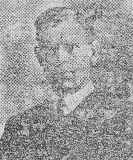
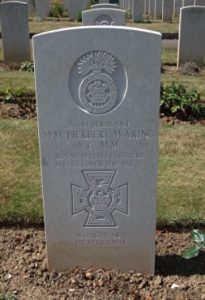
Griffith Llewelyn Watkin, Acting Sergeant, 290282, Royal Welsh Fusiliers. Griffith was the son of Nathaniel David Thomas Watkin and Mary Watkin (nee Davies), of 14, Berriew Street, Welshpool. He worked as an ironmonger prior to the war. Griffith enlisted into the 7th Battalion, Royal Welsh Fusiliers at Newtown on 20 August 1914. The battalion was a Territorial unit, which mobilised for war at Newtown in August 1914, as part of North Wales Brigade, Welsh Division and moved to Conway until the end of the month, before moving to Northampton. In December the Division moved to Cambridge and then in May 1915 to Bedford, where the Division was numbered and the formation became 158 Brigade, 53rd (Welsh) Division. On 19 July 1915 the entire Division sailed from Devonport for Imbros and on 9 August 1915 landed at Suvla Bay. The infantry moved off the beaches across the Salt Lake, under shellfire, into the scrub covered Chocolate Hill, but due to a lack of maps and no knowledge of the terrain, many of the units became disorientated, and the situation became chaotic. After the fighting died down, the winter rolled in, and the men first had to endure torrential downpours, which flooded the trenches, before the snow hit, and many men began falling ill in the terrible conditions. The Division was eventually evacuated from Gallipoli in December 1915, moving to Egypt to join the EEF, and helped guard the Suez Canal before taking part in operations to drive the Turks out of the Sinai. The EEF then turned its attention onto driving the Turks out of Palestine, and on 26 March 1917 launched its first offensive against the coastal city of Gaza, which guarded the road to Jerusalem. Initial gains during the day were lost when the assaulting divisions lost touch with each other, and communication broke down when a thick fog cloaked the battlefield. A second attempt to force Gaza was launched on 17 April, which also failed, and the EEF suffered a change in leadership, with Sir Edmund Allenby assuming command, before being re-organised, and a third offensive was launched against a wider front from Beersheba to Gaza on 31 October 1917. This time the Turkish defences were breached, and the road to Jerusalem now lay open and the EEF began to advance north. On 6 November 1917, 158 Brigade launched an attack on the Khuweilfeh Heights. Griffith was killed in action during the assault that day. The 35-year-old is buried in Beersheba War Cemetery, Israel.
Ernest Watkins, Private, 3345, Montgomeryshire Yeomanry. Ernest was the son of John and Margaret Watkins, of 4, New Street, Welshpool. He qualified as an Articled Solicitor and practised at Welshpool for several years prior to the war. Ernest enlisted at Welshpool into the Montgomeryshire Yeomanry and was posted to the 2/1st Battalion, Montgomeryshire Yeomanry, which had been raised in Welshpool as a reserve battalion. The battalion moved to Dorchester in July 1915 and then to Southwold in September, attached to the 1st Mounted Division. Ernest was posted out to Ireland as part of a large number of garrison troops sent to help quell the growing dissent at British rule. He had not been in Ireland long when he became ill, contracting pneumonia, and died at Dublin Infirmary on 8 March 1916. The remains of the 34-year-old were brought home quickly, and he was buried in Christ Church Churchyard, Welshpool two days later.
Maurice Edwin Weaver, Private, 8197, Herefordshire Regiment. Maurice was the son of Edwin Weaver and Mary Jane Weaver (nee Heath), of Welshpool. His father died just after his birth, so the family went to live with his fathers’ parents at Welshpool. He worked as a Hotel Porter at Rhayader prior to the war and lodged with John and Mary Evans at Caeherbert Lane. Maurice had enlisted into the Herefordshire Regiment at Rhayader on 11 February 1911 and had attended every annual TA summer camp over the coming years. The battalion was a Territorial unit and mobilised at Hereford on 4 August 1914, attached to the Welsh Border Brigade, Welsh Division. The Division initially moved to its war station at Pembroke Dock, but soon moved via the Wellingborough area to Bury St. Edmunds, and then to Bedford, where the Division was numbered the 53rd (Welsh) Division. Maurice did not embark for Gallipoli with the Division as he was beginning to suffer from poor health and was posted to the 2/1st Battalion, Herefordshire Regiment, which was at Northampton attached to 205 Brigade, 68th (2nd Welsh) Division. He was taken to the 1st Southern General Hospital at Birmingham for treatment but was found to have contracted pulmonary tuberculosis and was discharged from the army as medically unfit on 19 March 1916. Seriously ill, Maurice was taken to Newport Sanatorium, where he died of tuberculosis on 31 May 1916. The remains of the 25-year-old were brought home and he was buried in Christ Church Churchyard, Welshpool on 3 June.
William Wilkinson, Private, 290863, Royal Welsh Fusiliers. William was the son of Edward and Elizabeth Wilkinson, of Welshpool. He had served with the South Wales Borderers as a young man, before returning to Welshpool and married Annie Elizabeth Burgess at Welshpool in 1902. The couple set up home at 14, Clifton terrace, where their seven children were born. William worked as a Timber Haulier for the Cambrian Railways prior to the war. He enlisted at Welshpool into the 7th Battalion, Royal Welsh Fusiliers on 24 November 1914. The battalion was a Territorial unit, which mobilised for war at Newtown in August 1914, as part of North Wales Brigade, Welsh Division and moved to Conway until the end of the month, before moving to Northampton. In December the Division moved to Cambridge and then in May 1915 to Bedford, where the Division was numbered and the formation became 158 Brigade, 53rd (Welsh) Division. On 19 July 1915 the entire Division sailed from Devonport for Imbros and on 9 August 1915 landed at Suvla Bay. The infantry moved off the beaches across the Salt Lake, under shellfire, into the scrub covered Chocolate Hill, but due to a lack of maps and no knowledge of the terrain, many of the units became disorientated, and the situation became chaotic. After the fighting died down, the winter rolled in, and the men first had to endure torrential downpours, which flooded the trenches, before the snow hit, and many men began falling ill in the terrible conditions. The Division was eventually evacuated from Gallipoli in December 1915, moving to Egypt to join the EEF, and helped guard the Suez Canal before taking part in operations to drive the Turks out of the Sinai. The EEF then turned its attention onto driving the Turks out of Palestine, and on 26 March 1917 launched its first offensive against the coastal city of Gaza, which guarded the road to Jerusalem. Initial gains during the day were lost when the assaulting divisions lost touch with each other, and communication broke down when a thick fog cloaked the battlefield. William was badly wounded during the battle, being shot in the head and hand, and was evacuated to the 21st General Hospital at Alexandria for treatment. He appeared to be recovering and wrote home to his wife to allay her fears, but sadly died of his wounds on 17 May 1917. The 34-year-old is buried in Alexandria (Hadra) War Memorial Cemetery, Egypt.
Benjamin Williams, Private, 782, Royal Welsh Fusiliers. Benjamin was the son of Edward and Sarah Ann Williams, of 1, Brook Street, Welshpool. He enlisted into the 7th Battalion, Royal Welsh Fusiliers at Welshpool as a young man, and would have attended several annual TA summer camps prior to the war. The battalion was a Territorial unit, which mobilised for war at Newtown in August 1914, as part of North Wales Brigade, Welsh Division and moved to Conway until the end of the month, before moving to Northampton. In December the Division moved to Cambridge and then in May 1915 to Bedford, where the Division was numbered and the formation became 158 Brigade, 53rd (Welsh) Division. On 19 July 1915 the entire Division sailed from Devonport for Imbros and on 9 August 1915 landed at Suvla Bay. The infantry moved off the beaches across the Salt Lake, under shellfire, into the scrub covered Chocolate Hill, but due to a lack of maps and no knowledge of the terrain, many of the units became disorientated, and the situation became chaotic. Benjamin was killed in action on the following day, 10 August 1915. The 19-year-old has no known grave and is commemorated on the Helles Memorial, Gallipoli.
Edward Williams, Private, 290869, Royal Welsh Fusiliers. Edward was the son of Elizabeth Williams, of 31, Gungrog Lane, Welshpool. He was raised by his grandparents, David and Sarah Williams, at 33, Gungrog Lane. Edward worked as a quarryman at the Welshpool Standard Granite Quarry prior to the war. He enlisted into the 7th Battalion, Royal Welsh Fusiliers at Newtown on 25 November 1914 and was posted to the 4th (Reserve) Battalion, Royal Welsh Fusiliers, which was attached to the 68th (2nd Welsh) Division at Northampton. Edward embarked for France on 11 January 1917 and was posted to the 1/4th Battalion, Royal Welsh Fusiliers, which was the Pioneer Battalion to the 47th (2nd London) Division. Edward joined the battalion at the Pioneer Camp near Dickebusch, in the Ypres Salient, two days later. The Division remained here over the coming months, taking part in the Battle of Messines Ridge in June 1917, and the 4th RWF worked hard after the battle, repairing roads and extending tram lines towards the new front-line positions. The 4th RWF then moved positions to Chippawa Camp, near Reninghelst, where it remained over the coming weeks until the 47th Division was relieved in September, after eleven hard months in the Ypres Salient. The Division then transferred south to the Arras sector, taking over a section of the front near Roclincourt, where the 4th RWF was put to work again, and from 20 November onwards the Division took part in the Battle of Cambrai. The offensive broke the Hindenburg Line, aided by tanks, but the Germans launched a huge counter-offensive on 30 November and reclaimed all the lost ground, as well as creating a dangerous salient in the British lines at Flesquières. By 1 December the 4th RWF was at work in the Hindenburg Support Line, some 500 yards west of Flesquières, working on converting an old German trench tramway as well as carrying rations up to the front-line troops at Bourlon Wood and village. Edward was wounded here at some time between 1 and 2 December and was evacuated to the 4th Lowland Field Ambulance at Hermies where he died of his wounds on 3 December 1917. The 20-year-old is buried in Hermies Hill British Cemetery, France.
Harry Williams. Harry cannot presently be identified.
John Pryce Williams, Private, 895, Royal Welsh Fusiliers. John was born at Pool Quay on 9 July 1893, the son of John Williams and Fanny Williams (nee Pryce). The family later resided at 23, Berriew Road, Welshpool. Upon leaving school, he became a postman at Welshpool. John enlisted at Welshpool into the 7th Battalion, Royal Welsh Fusiliers. The battalion was a Territorial unit, which mobilised for war at Newtown in August 1914, as part of North Wales Brigade, Welsh Division and moved to Conway until the end of the month, before moving to Northampton. In December the Division moved to Cambridge and then in May 1915 to Bedford, where the Division was numbered and the formation became 158 Brigade, 53rd (Welsh) Division. On 19 July 1915 the entire Division sailed from Devonport for Imbros and on 9 August 1915 landed at Suvla Bay. The infantry moved off the beaches across the Salt Lake, under shellfire, into the scrub covered Chocolate Hill, but due to a lack of maps and no knowledge of the terrain, many of the units became disorientated, and the situation became chaotic. John was killed in action on the following day, 10 August 1915. The 22-year-old has no known grave and is commemorated on the Helles Memorial, Gallipoli.
Richard Edward Williams, Private, 64375, Welsh Regiment. Richard was the son of William and Jane Williams, Rhallt, Berriew. By 1911 the family had moved to 5, Sergeants Row, Welshpool, where Richard became an Apprentice Baker. Richard enlisted into the 63rd Training Reserve Battalion at Welshpool on 17 October 1916 and was posted to Kinmel Park for training. On 18 January 1918 Richard embarked for France and was sent to No 5 Infantry Base Depot at Rouen. On 18 February 1918 he joined the 9th Battalion, Welsh Regiment, which attached to 58 Brigade, 19th (Western) Division, and was near Bancourt, facing the Hindenburg Line. By the time Richard arrived, the 9th Welsh had been relieved and was in a rest camp at Rocquigny, carrying out a system of training and enjoying inter-company sports. The battalion then moved to Phipps Camp, Haplincourt, to carry out more training, remaining there until 21 March, remaining at ‘Stand To’ due to rumours of an impending German offensive. At 04.45 the peace was broken by an intense artillery bombardment along the entire section of front running from nearby Croisilles south to La Fère, so the 9th Welsh was Stood To, before receiving orders to advance to Gaika Copse. The Germans had by now attacked the front line with highly trained stormtroopers and had broken through in many places. By 14.00 the 9th Welsh had moved into the main battle area, to support the remainder of the 19th Division, and to support the beleaguered 51st (Highland) Division at the Hermies Switch Line. Richard had not even been in a front-line trench yet but had now been plunged into the fiercest and most important battle of the entire war. By the morning of 22 March, the 9th Welsh had been forced to side-step before taking over defensive positions in front of the village of Beugny and prepared to hold the village to enable the remainder of the division to retire to safety. At 10.30 on 23 March the Germans began to launch a series of attacks against the village, breaking through the northern edge of the village by the afternoon. Heavy fighting raged throughout the day, before the 9th Welsh was forced to withdraw to a new defensive line overnight. Richard had been posted missing on 23 March 1918 and was afterwards confirmed as having been killed in action on that date. He was originally buried in a mass grave on the battlefield, but after the war the grave was exhumed, and eight sets of remains were carefully removed. Only one set of remains, those of Richard’s, were identified, as he still had his ID tag, and he was re-interred in Bancourt British Cemetery, France. His brother, William, was killed later that year.
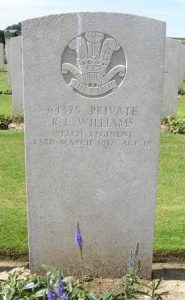
Thomas Rock Williams, Private, 35340, South Wales Borderers. Thomas was the son of Thomas and Ruth Williams of Plascoch, Llangyniew. He enlisted into the South Wales Borderers at Welshpool at some time in 1915, and was posted to the 12th Battalion, South Wales Borderers, which was attached to 119 Brigade, 40th (Bantam) Division. This Division was formed between September and December 1915, composed of bantam units and others which had a mixture of regulation-height and shorter men. Weeding out of very under-sized or unfit men delayed the training programme, and it was not until late Spring 1916 that the Division was ready to proceed on active service. The Division moved to France during the first week of June 1916 and moved to the front near Calonne-sur-la-Lys, for trench initiation and training. Once judges to be ready to hold the line themselves, the Division began its first routine tour in the line at Calonne, and its infantry battalions took turns rotating in the trenches. By 19 September the Division had taken over the Maroc sector, and its battalions again began the usual routines of trench rotation. On 20 October the 12th SWB moved forward from reserve to take over the front-line at Maroc, beginning a routine spell in the trenches. The spell was relatively quiet, save for the odd shelling by German trench-mortars, son on 26 October, two patrols were sent out by the battalion. Thomas was killed in action on one of these patrols that night, 26 October 1916. The 20-year-old is buried in Philosophe British Cemetery, Mazingarbe, France.
William Williams, Private, 54672, Royal Welsh Fusiliers. William was the son of William and Jane Williams, Rhallt, Berriew. By 1911 the family had moved to 5, Sergeants Row, Welshpool, where William worked as a Waggoner. William enlisted into the 7th Battalion, Royal Welsh Fusiliers at Welshpool, and after completing his training, was posted to France in the summer of 1916, joining the 16th Battalion, Royal Welsh Fusiliers, which was attached to 113 Brigade, 38th (Welsh) Division. He probably joined the battalion after its withdrawal from the Somme sector, following the Division’s assault on Mametz Wood in July. The Division then took over a section of the front at Hébuterne before moving to the Ypres Salient and taking over the Canal Bank sector at Boesinghe. The infantry battalions of the Division then began carrying out the normal pattern of rotation in the trenches, four days in the front, four in support and four in reserve, whilst also working on trench improvement, digging new trenches, and carrying out regular patrols and trench raids. On 31 July 1917 the Division launched its famous assault on the Pilckem Ridge, capturing Iron Cross and reaching its objective of the Steenbeek, then played a supporting role in the Battle of Langemarck. The Division was transferred to the Sailly-sur-la-Lys sector in September and remained in the area over the winter before being moved to positions north of Albert, at Bouzincourt Ridge, at the end of March 1918, relieving the battered 2nd and 47th Divisions. It held this sector, again carrying out minor operations and trench raids, over the coming months, before taking part in the great offensive of 21 August 1918, and began its advance towards the Hindenburg Line. By now, William had been transferred to the 2nd Battalion, Royal Welsh Fusiliers, which was attached to 115 Brigade, in the same 38th (Welsh) Division. By 13 October the Division had reached the River Selle and began preparations to launch an assault across it. William was killed in action here on 16 October 1918. The 24-year-old is buried in Montay-Neuvilly Road Cemetery, Montay, France. His brother, Richard, had been killed later that year.
Francis George Fox Wilson, Private, 81363, Durham light Infantry. Francis was born at Brook Bottom, Derbyshire in 1899, the illegitimate son of Harriet Wilson. His mother married George Fox, of Derby in 1908. Francis was raised by his grandparents in Derby but had come to Welshpool as a young man to work in a shop. Francis returned to Bakewell to enlist into the 13th Training Reserve Battalion on 15 September 1917. He trained with the battalion at Brocton before embarking at Folkestone for France on 31 March 1918. Upon his arrival, the Western Front was in turmoil, following the launching of a great German offensive along the section of line running south from Croisilles to La Fère on 21 March, so Francis was drafted straight to the battered 15th Battalion, Durham Light Infantry. The battalion was attached to 64 Brigade, 21st Division and had been holding the line at Heudicourt when the Germans struck. The Division had been forced to withdraw from there via Mont St. Quentin, Clery and Hem over the coming days, towards Chipilly and upon being relieved moved to Heilly, in the Somme valley before being transferred to the more peaceful Ypres Salient to rest and rebuild. The 15th DLI alone had lost over 500 officers and men. Francis joined the battalion at Locre on 4 April, just days before it moved into the front line in its new sector at Glencorse Wood. Unfortunately, the Germans launched the second phase of their offensive along the Lys Valley on 9 April and the 20th Division was moved south to the Wytschaete sector to strengthen the thinly stretched line there, before being caught up in fresh fighting. The Division suffered terrible casualties again over the coming days, so was relieved and moved to the peaceful Aisne sector to begin to rebuild again. Unfortunately, on 27 May 1918 the Germans launched their third, and final, offensive of 1918 in the Aisne sector, attacking from their positions along the Chemin-des-Dames ridge. The 15th DLI was holding positions at Cauroy when it was hit by the Germans and heavy fighting raged over the coming days. Francis was posted as missing during the fighting from 27 to 29 May 1918 and was later found to have been wounded and taken prisoner by the Germans. He died of his wounds in captivity at Blanzy on 16 June 1918 and was initially buried by the Germans in Blanzy German Military Cemetery. After the war the body of the 18-year-old was exhumed and he was re-buried in Rethel French National Cemetery, near Rheims, France.
Cyril Patrick Pryce Yearsley, Private, Montgomeryshire Yeomanry. Cyril was the son of Charles Pryce Yearsley and Lizzie Eleanor Yearsley (nee Morris), of Bryntirion, Welshpool. He had enlisted at Welshpool into the 3/1st Battalion, Montgomeryshire Yeomanry. Cyril did not serve overseas during the war, and little record of him remains, but he died at 6, Christchurch Road, Bournemouth on 8 January 1920, aged 19. Cyril’s remains were brought home for burial in Christ Church Churchyard, Welshpool. Cyril is not commemorated by the CWGC.